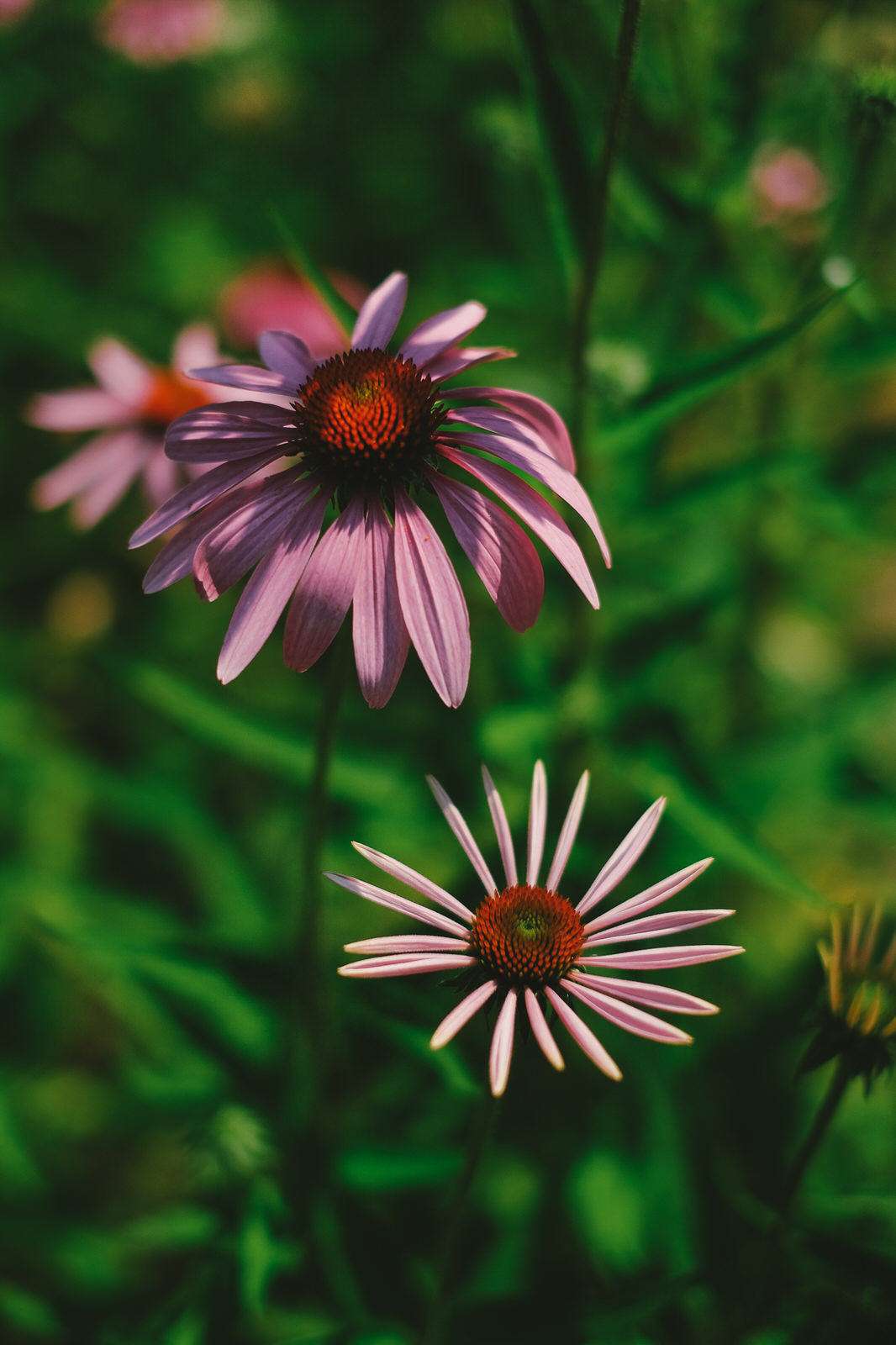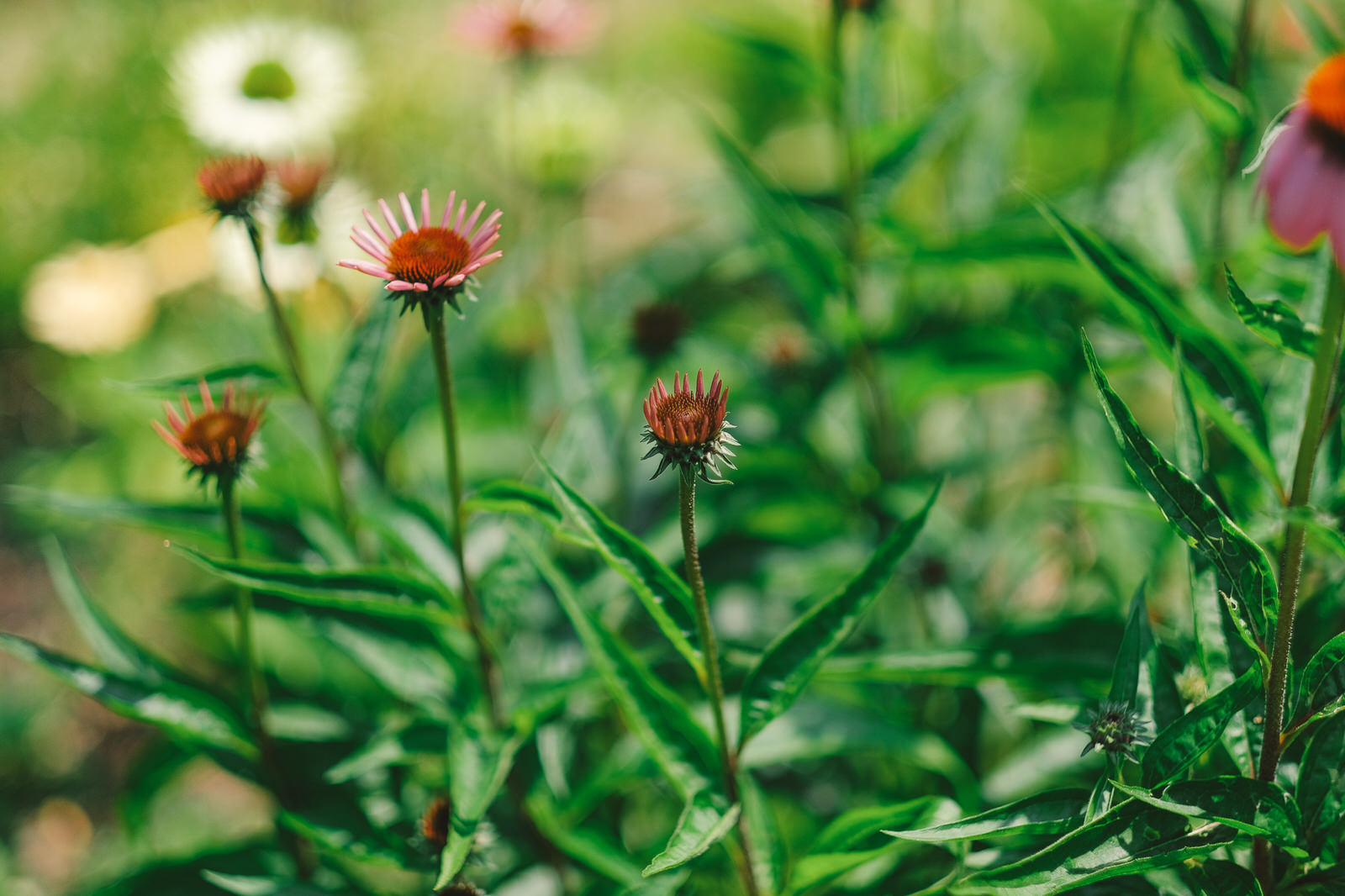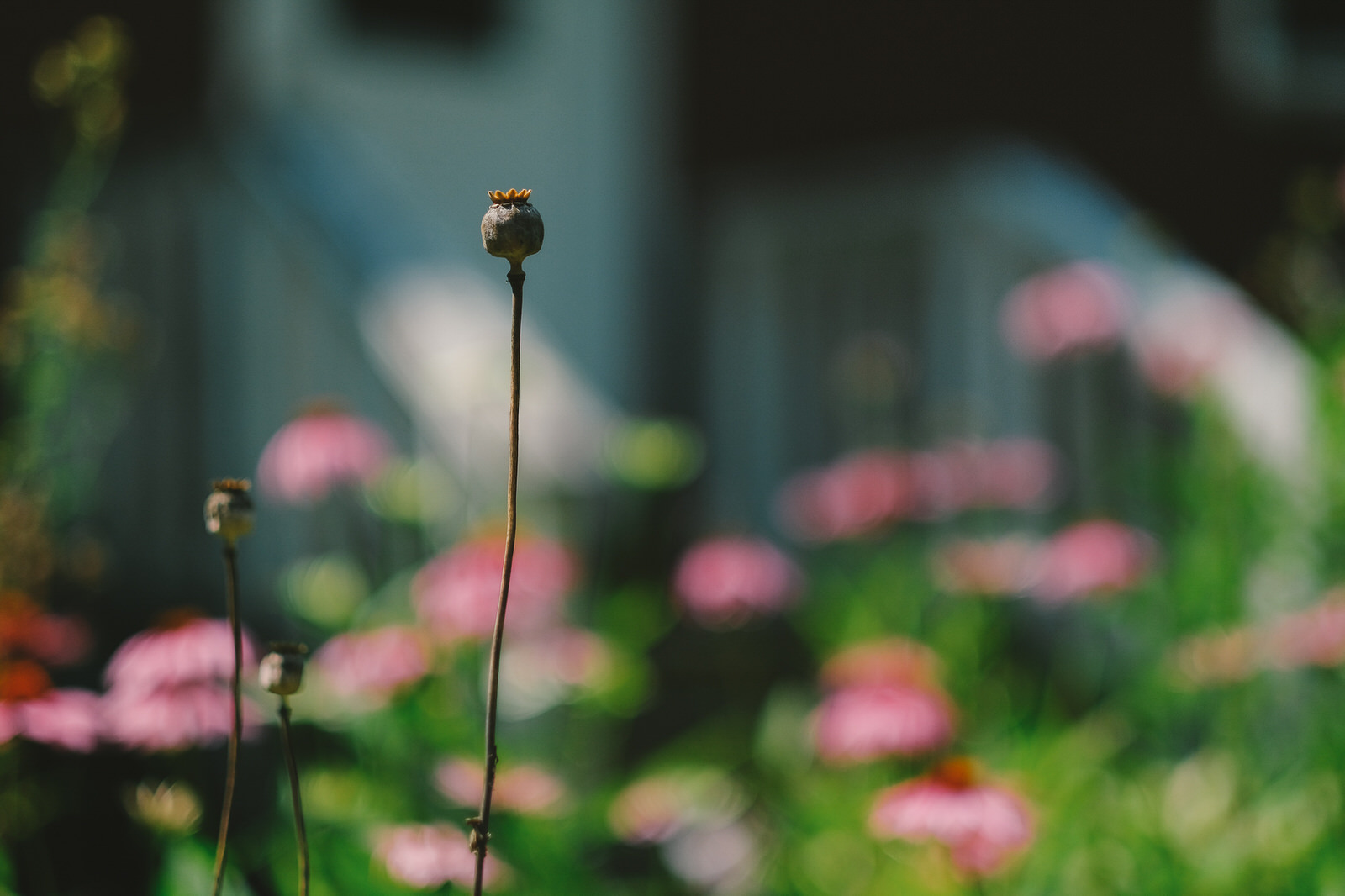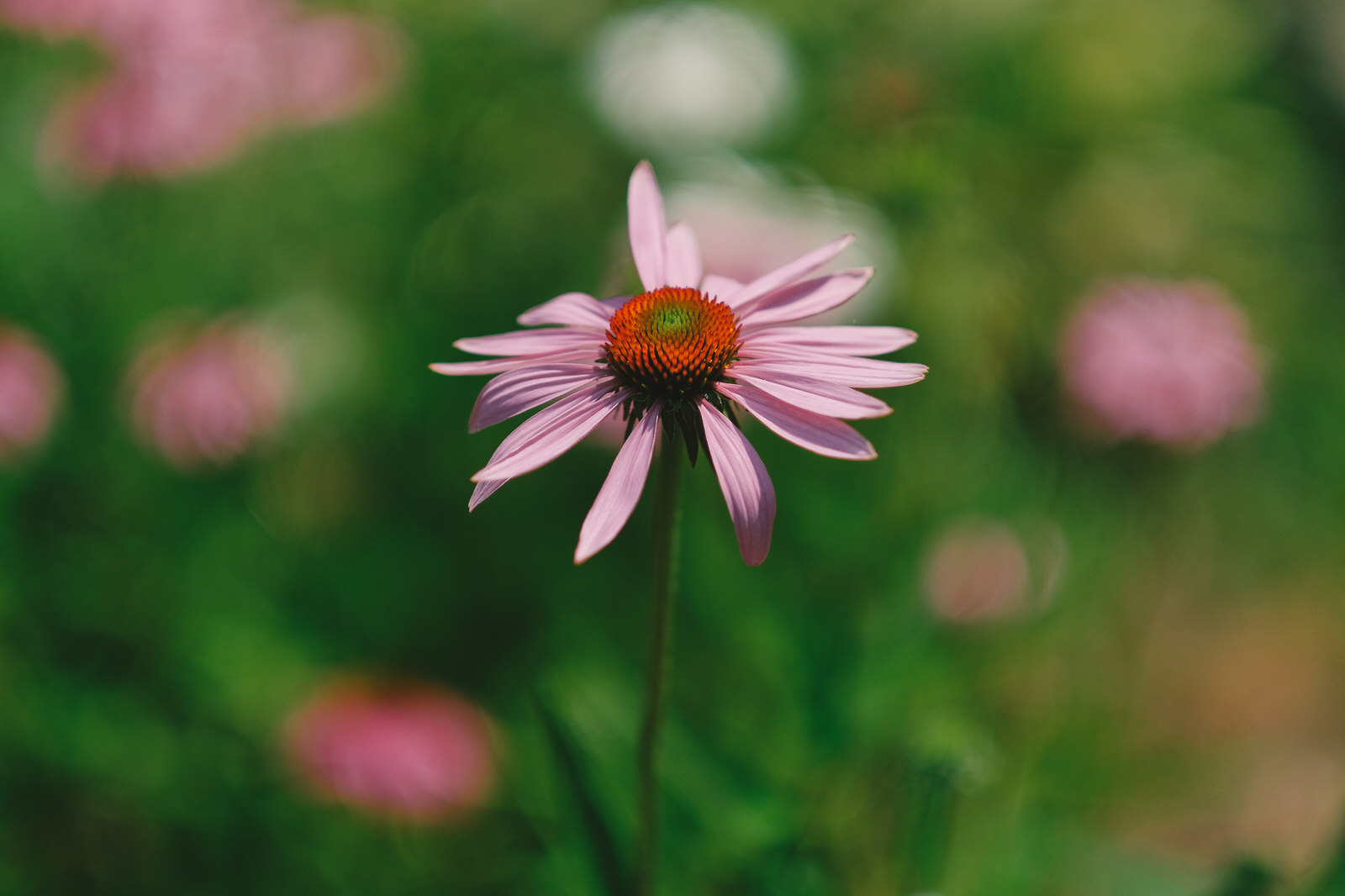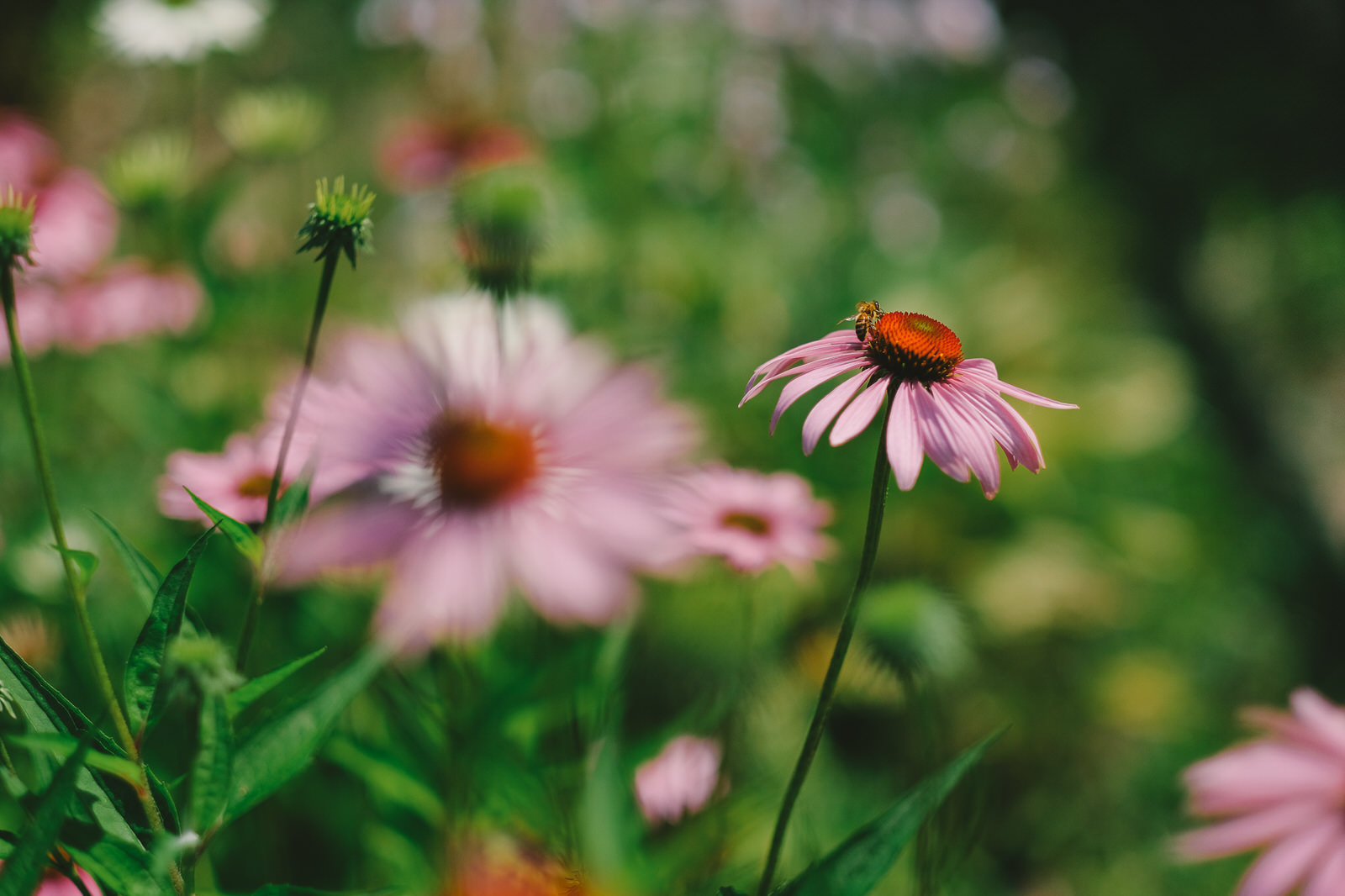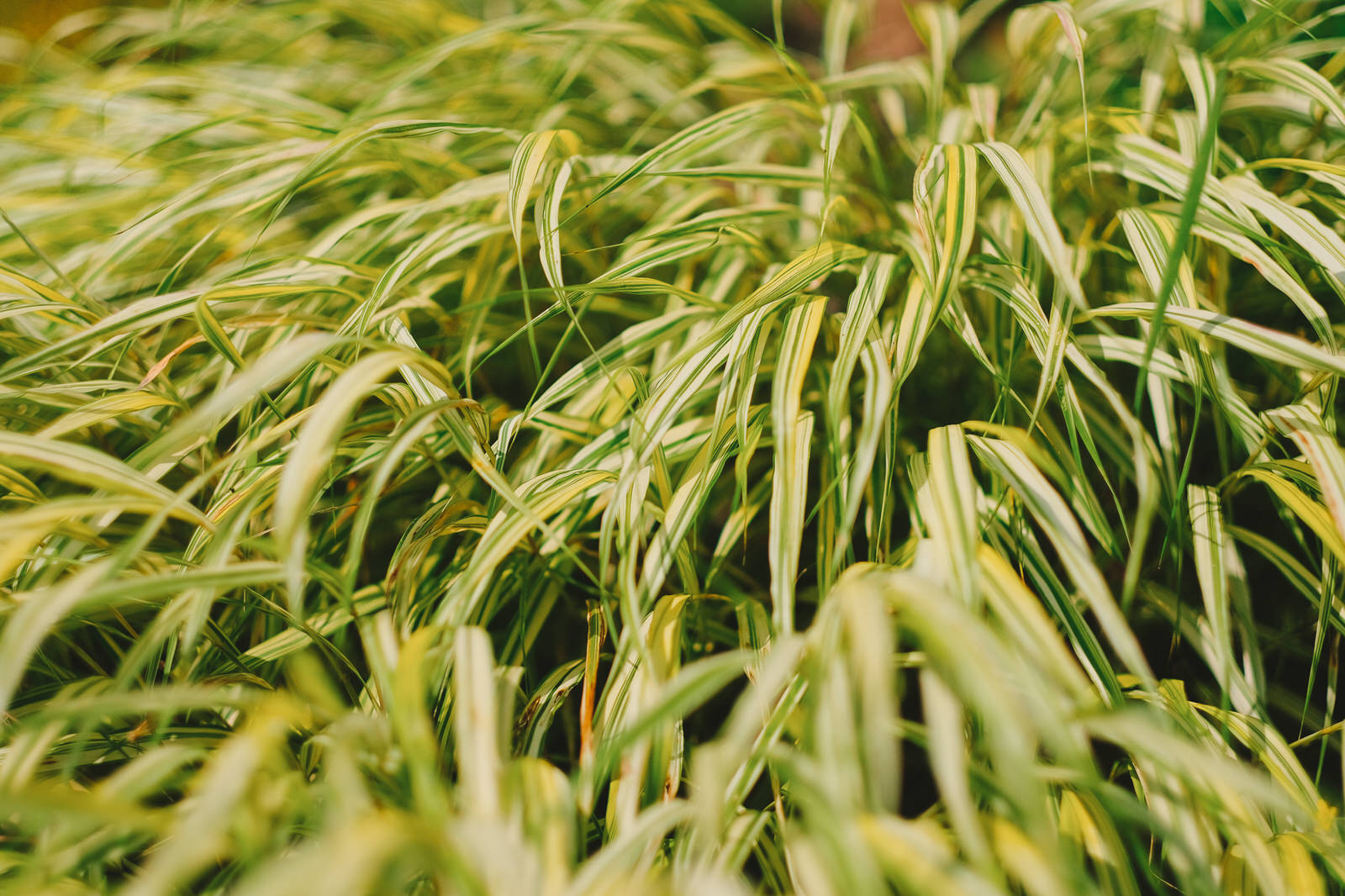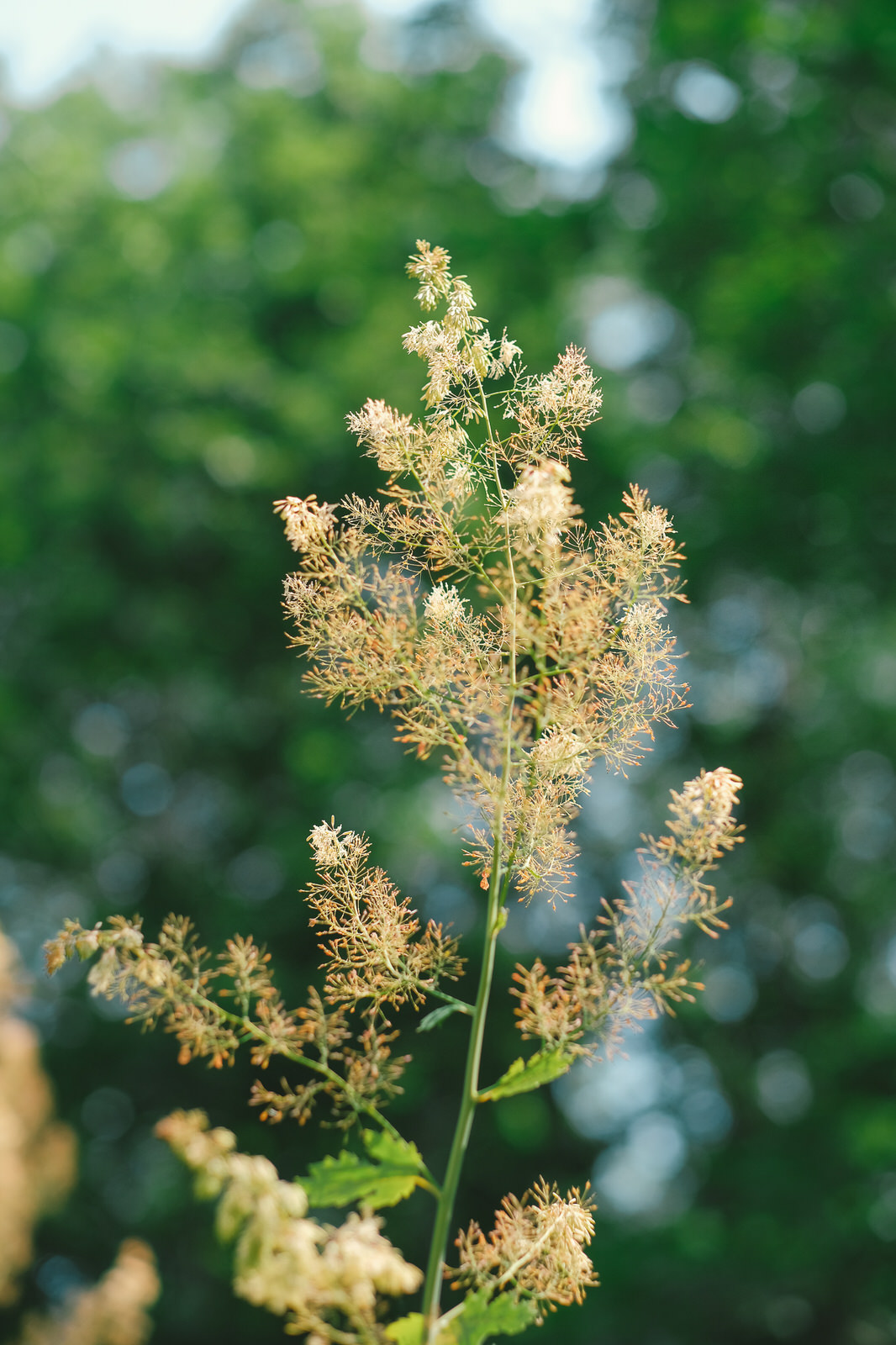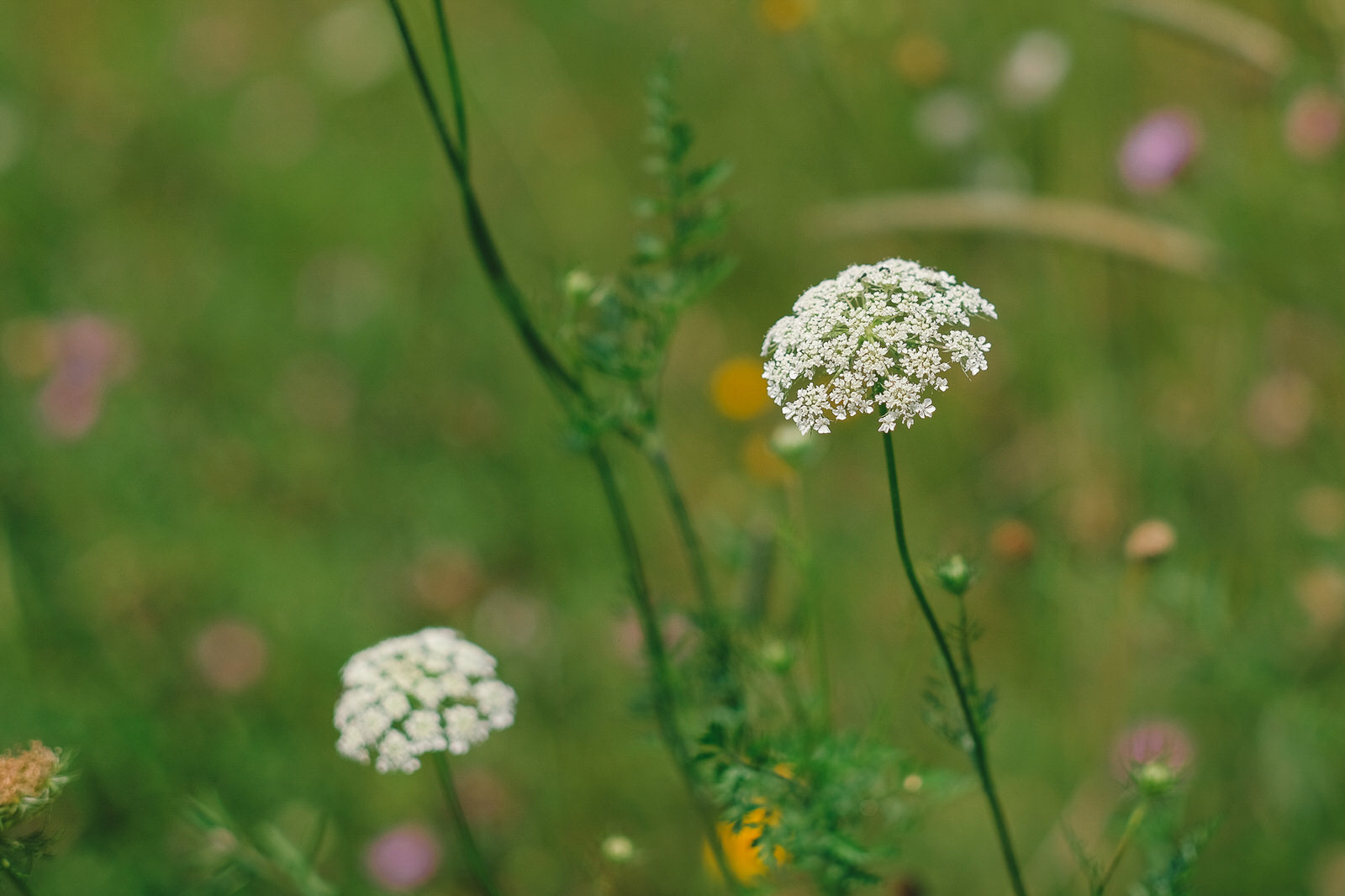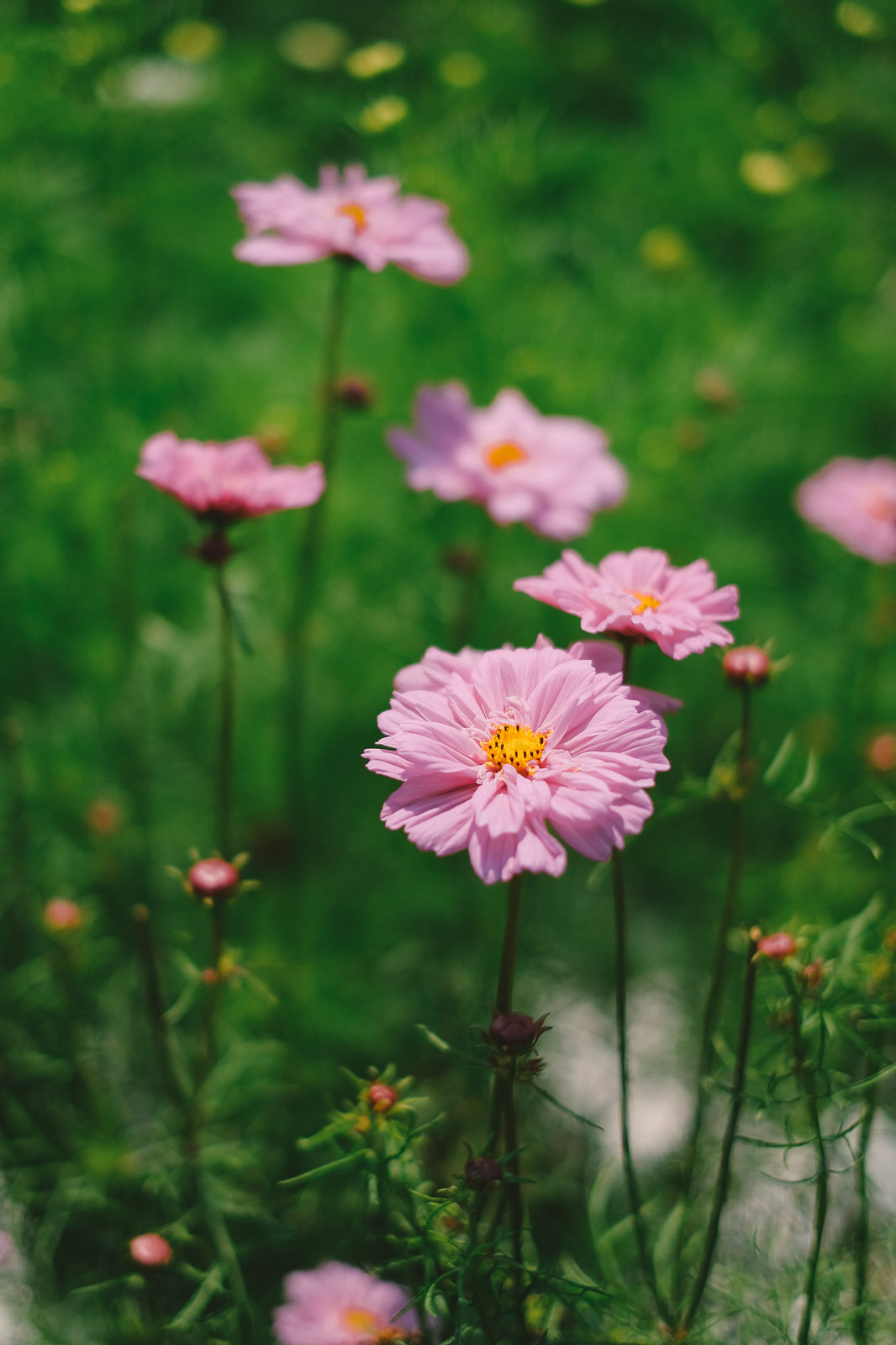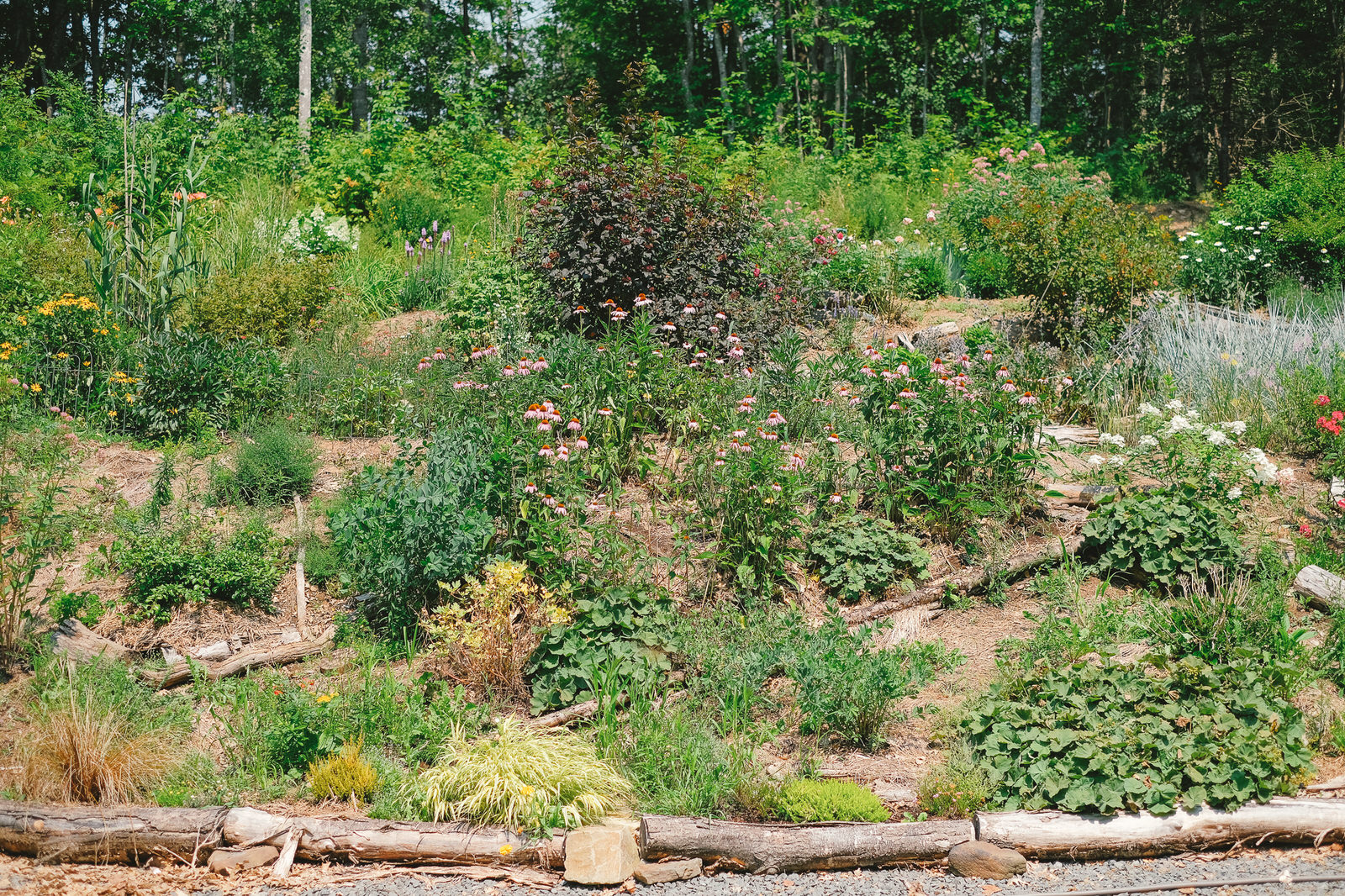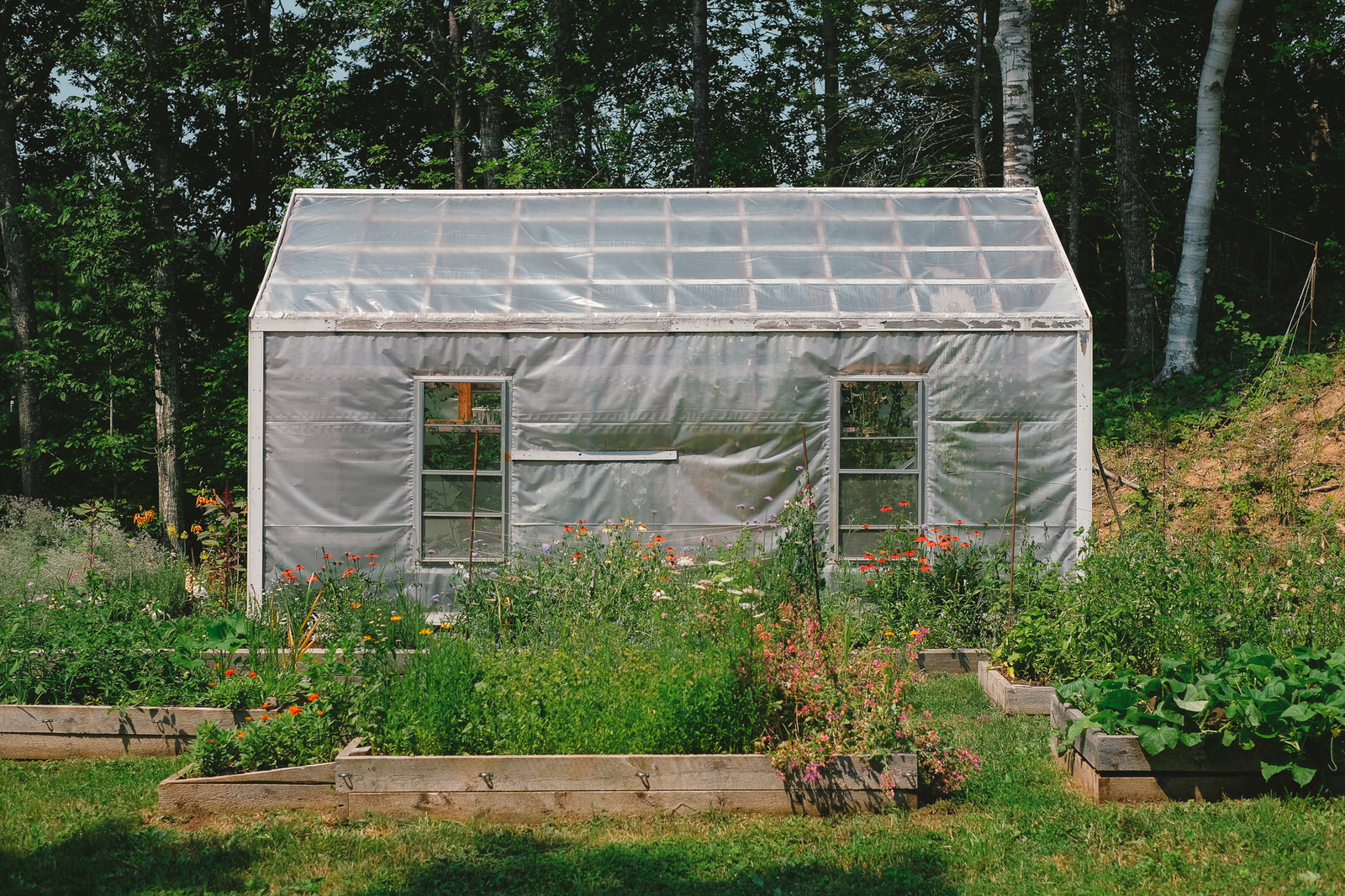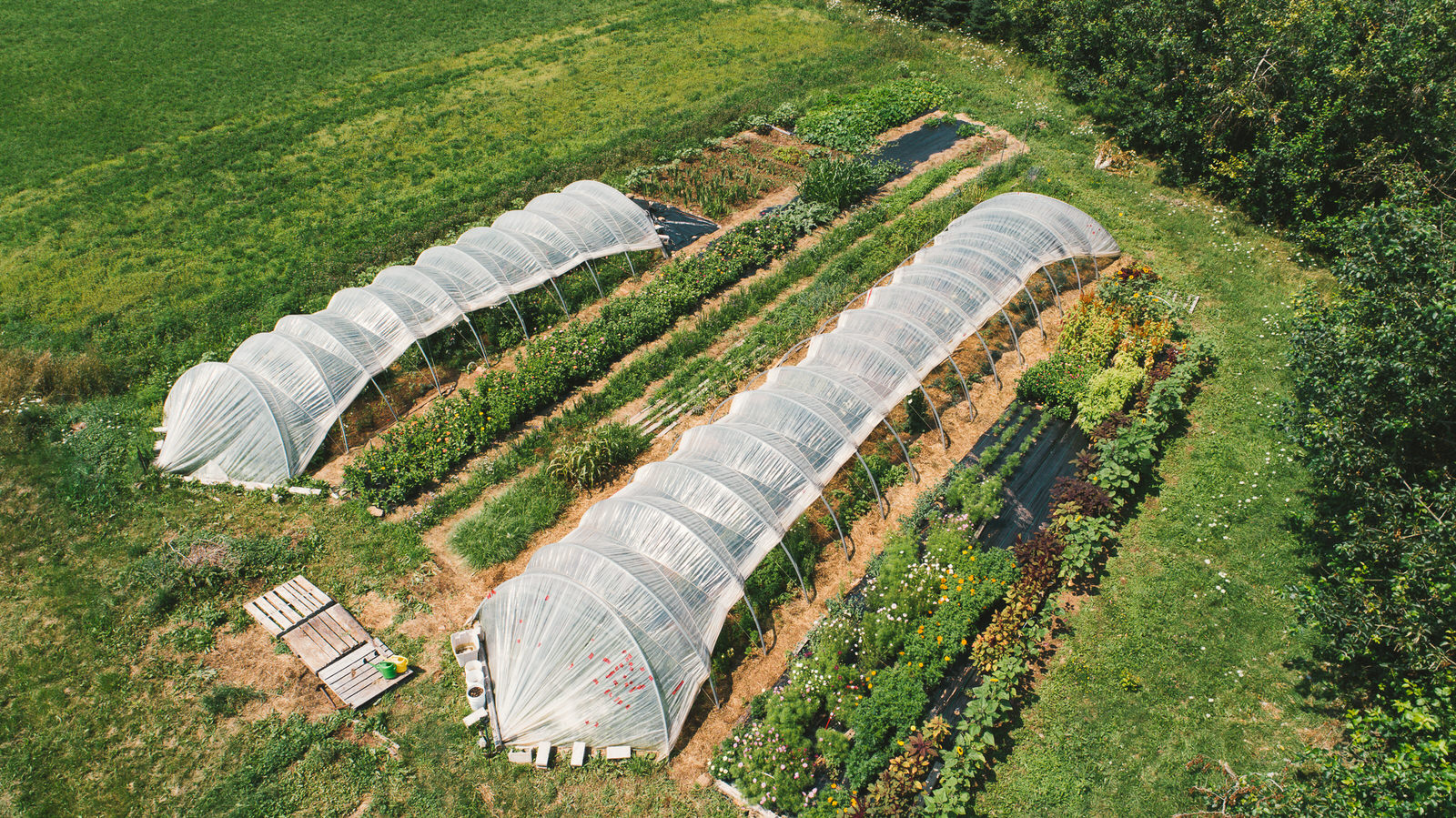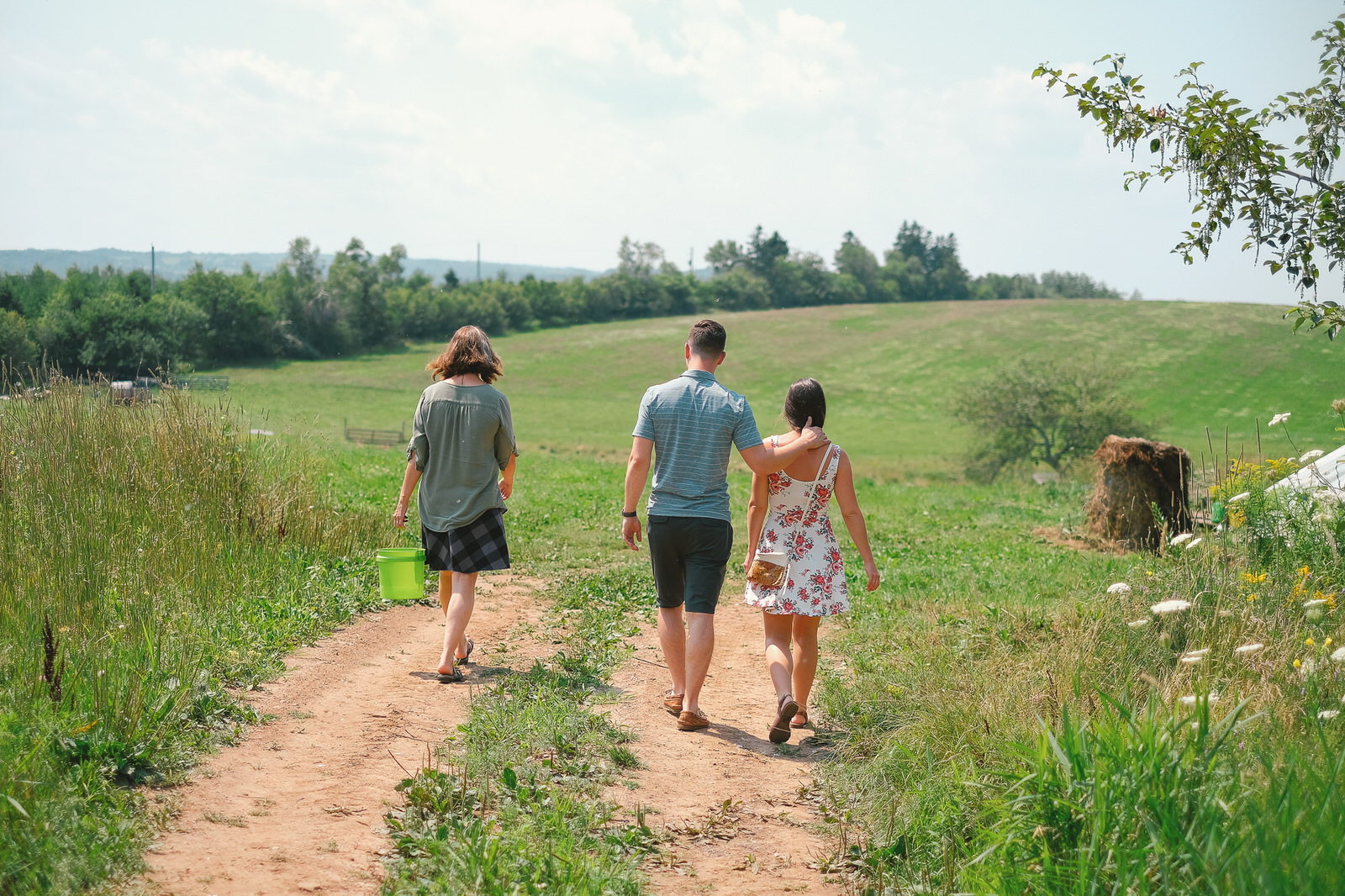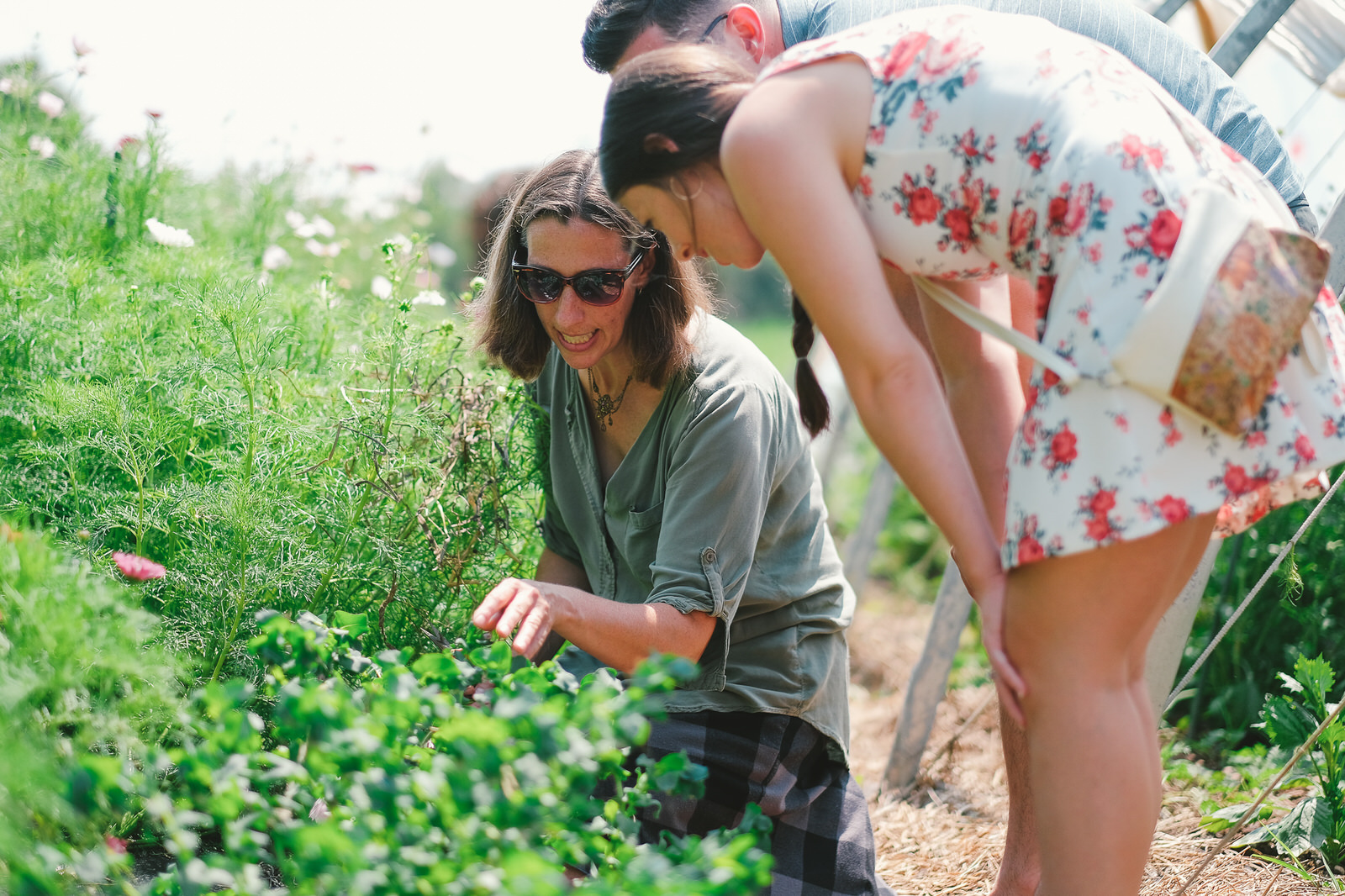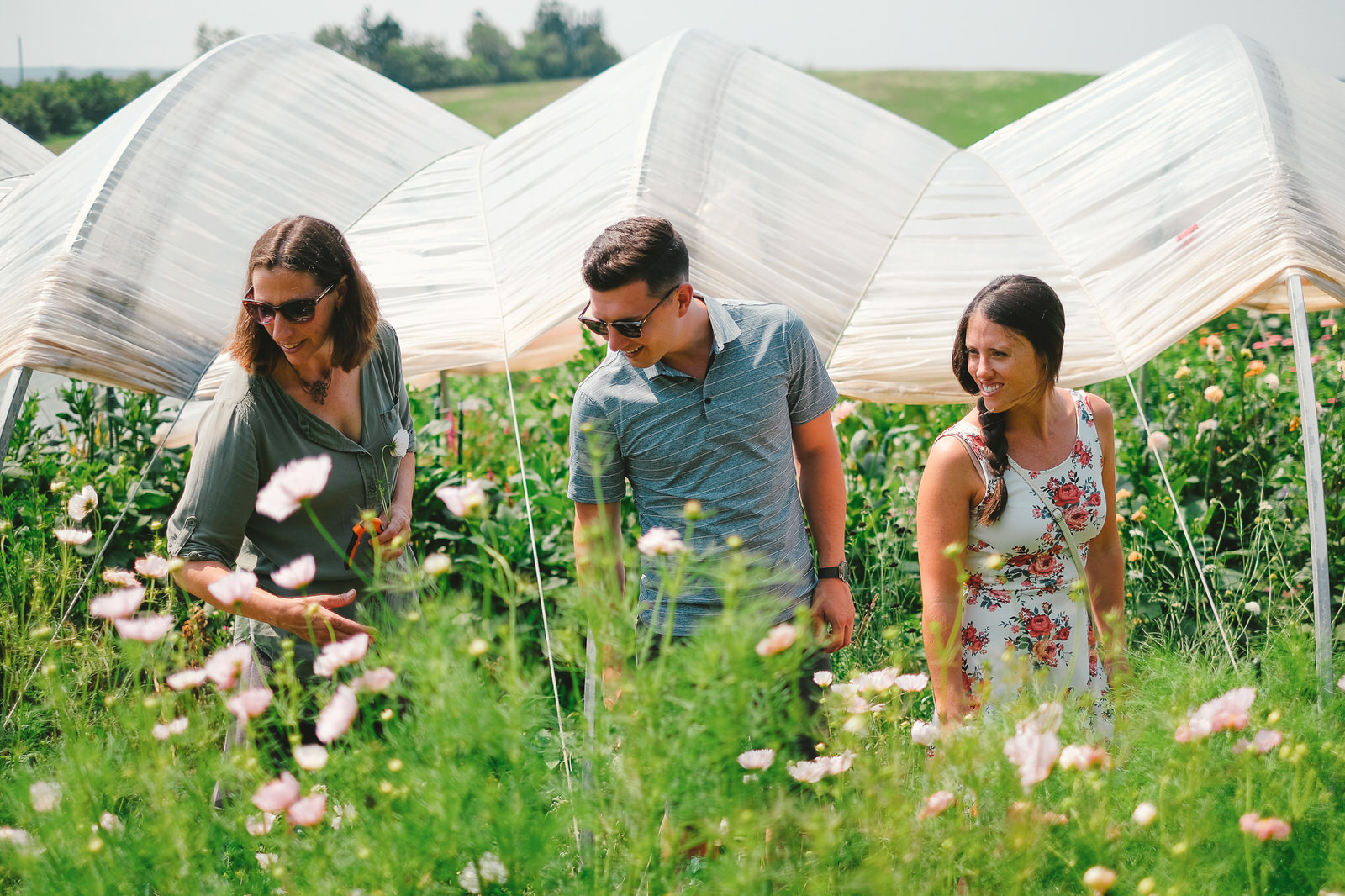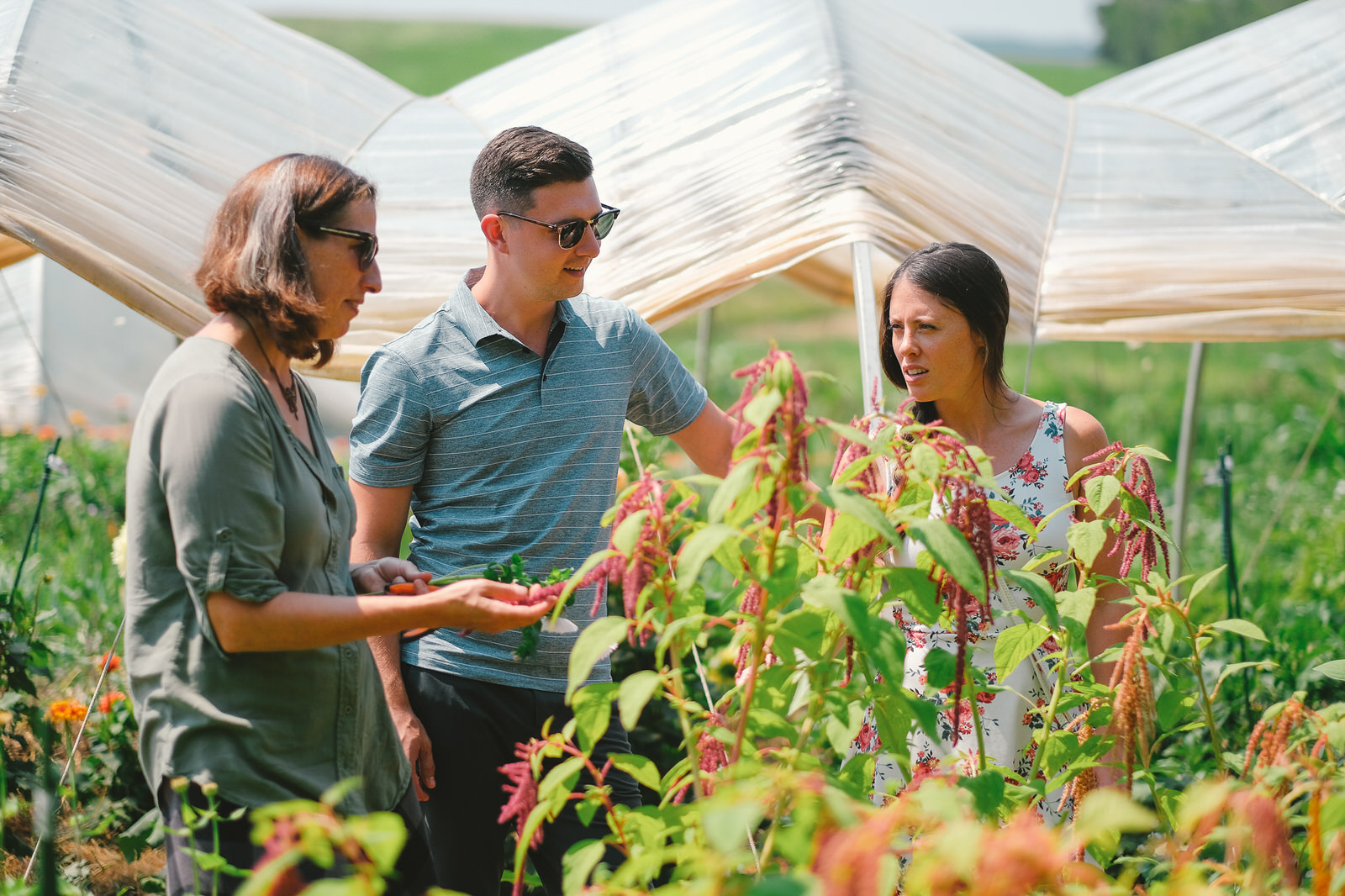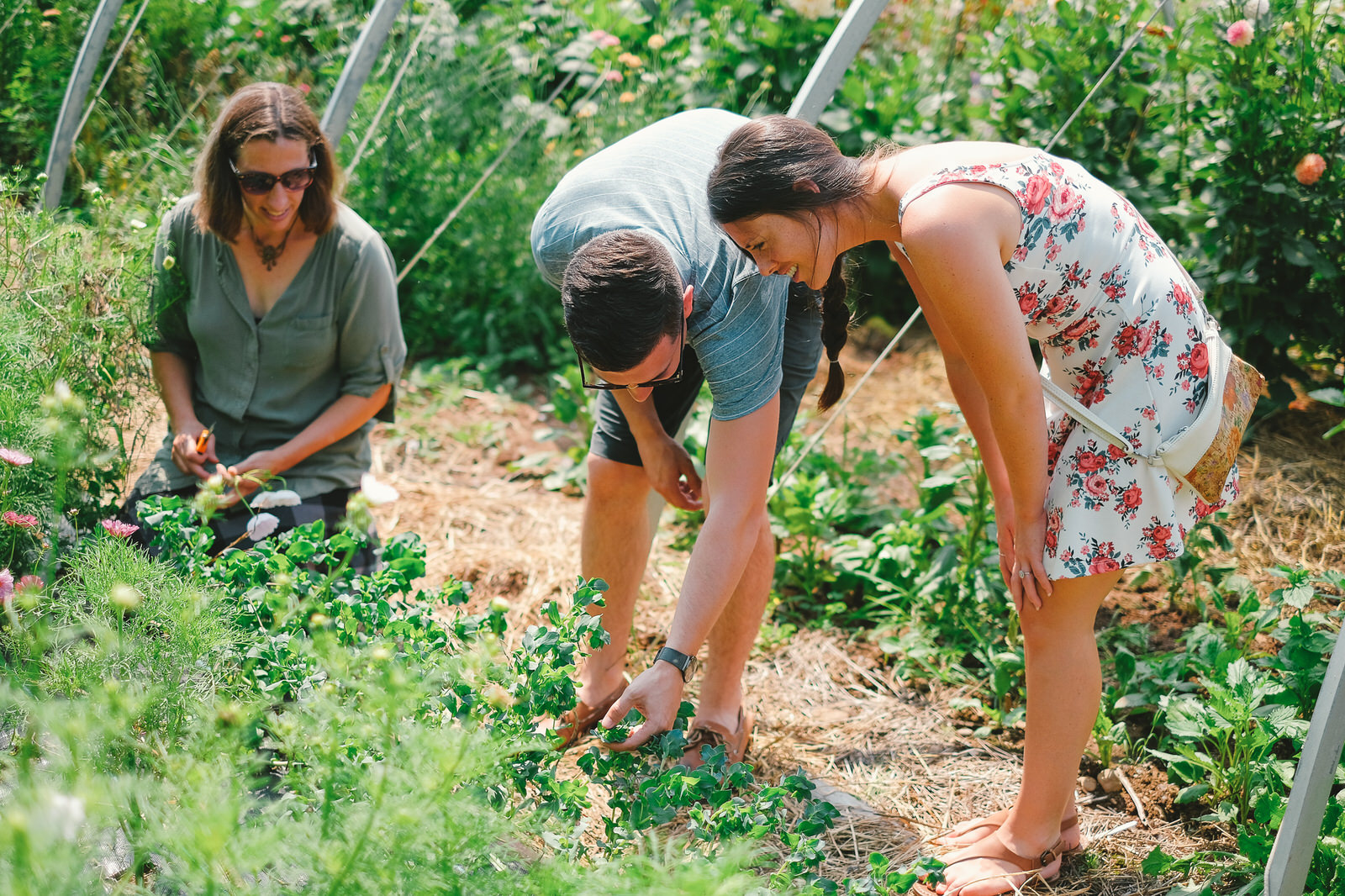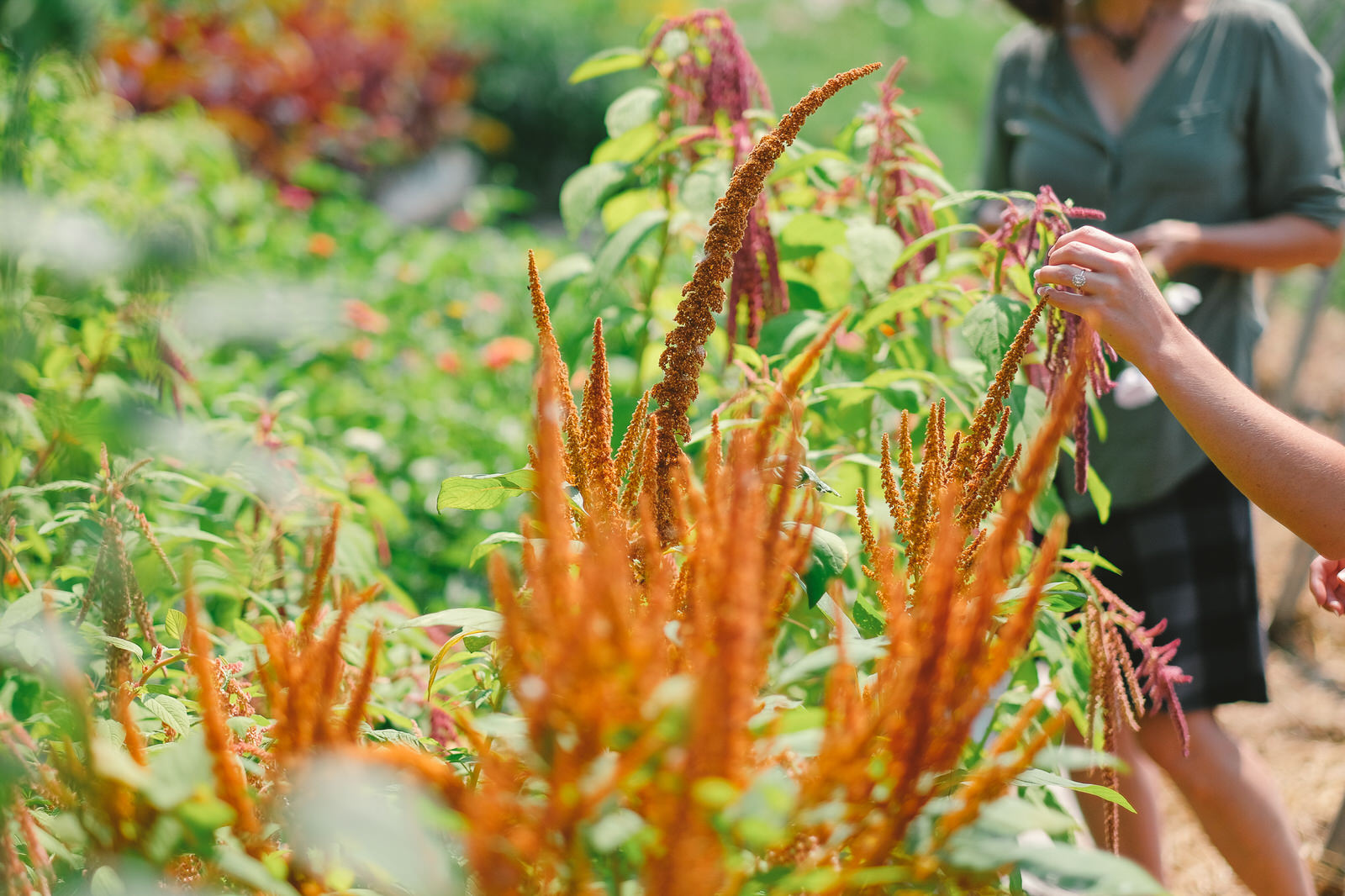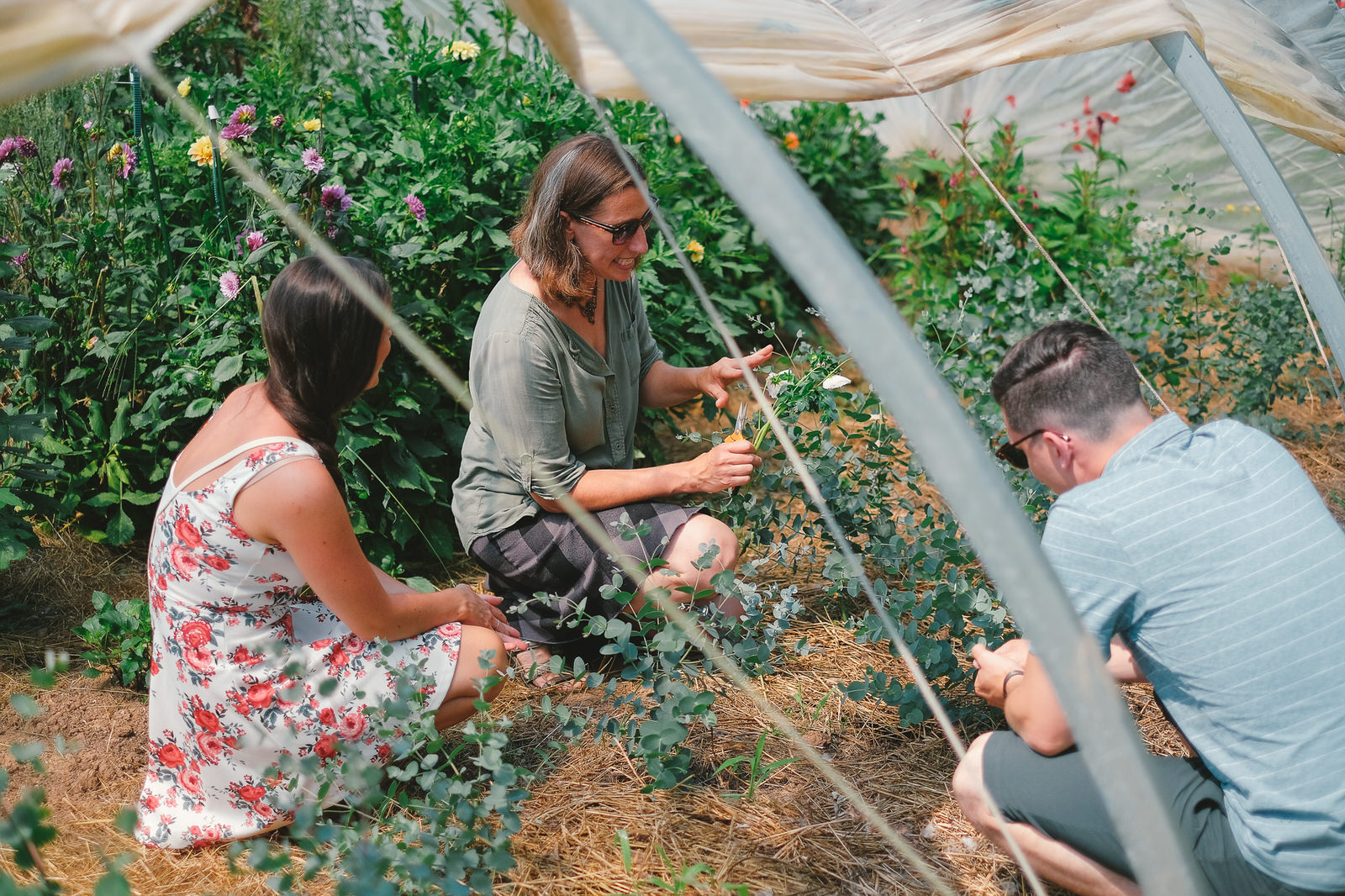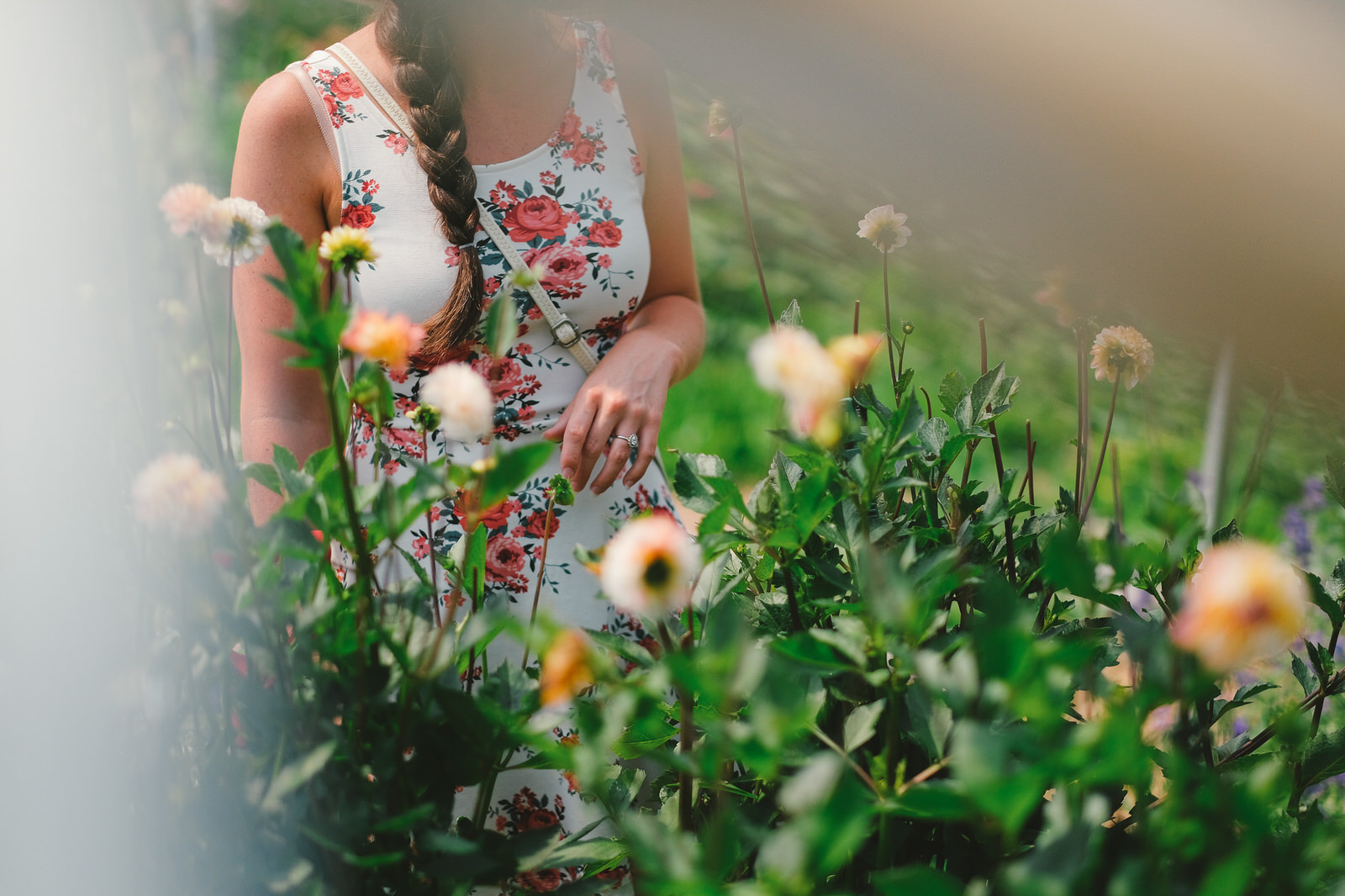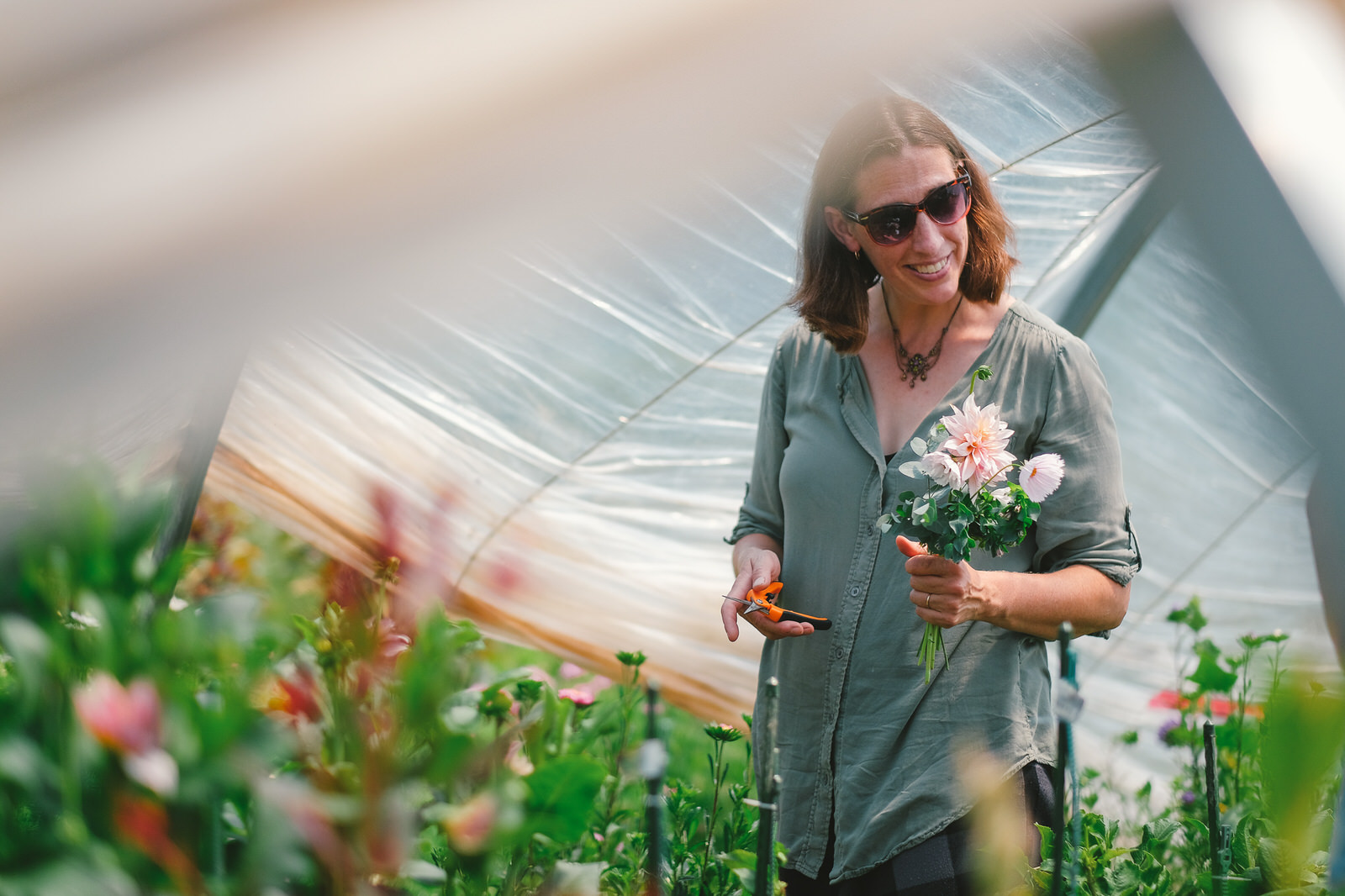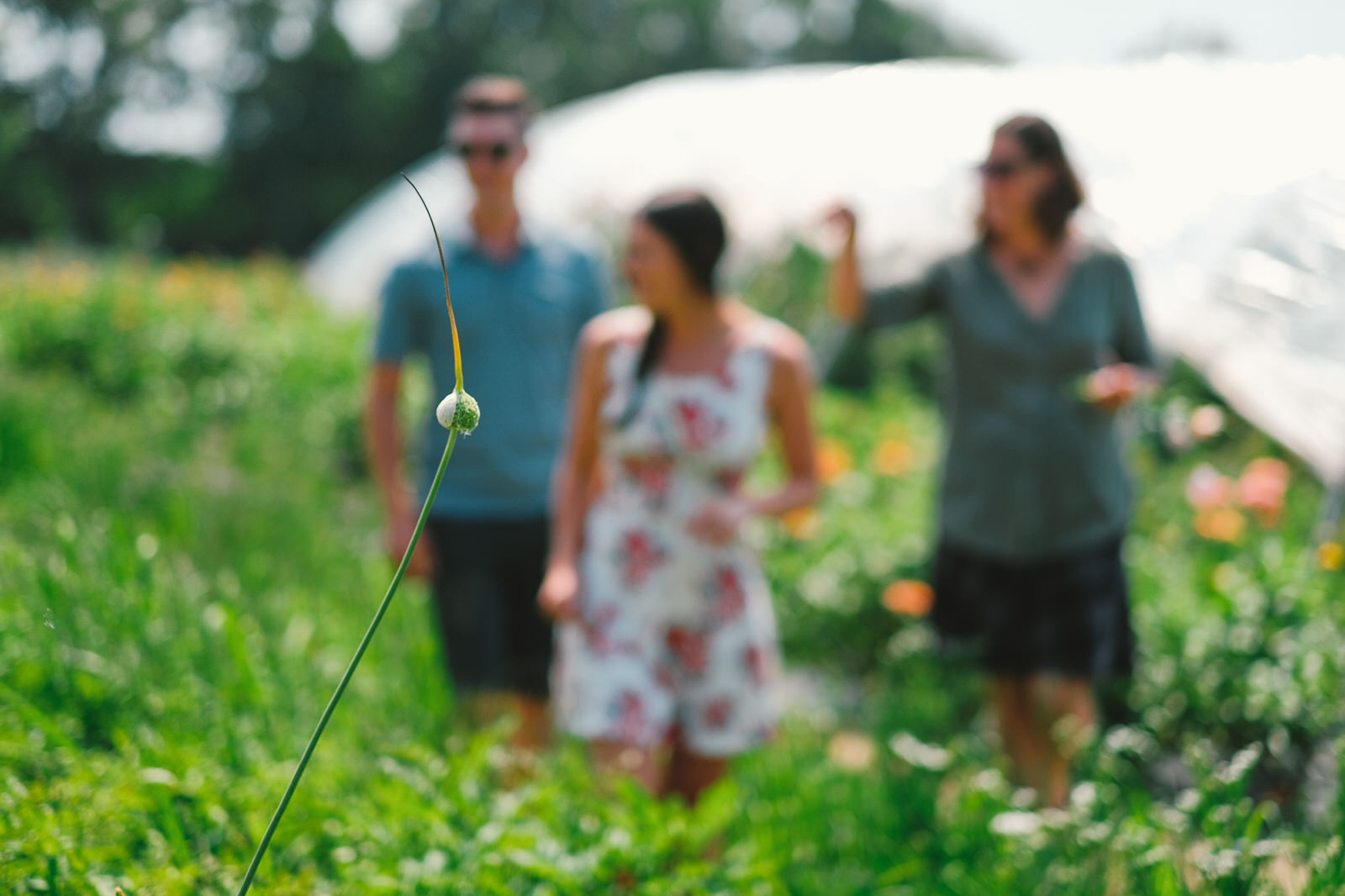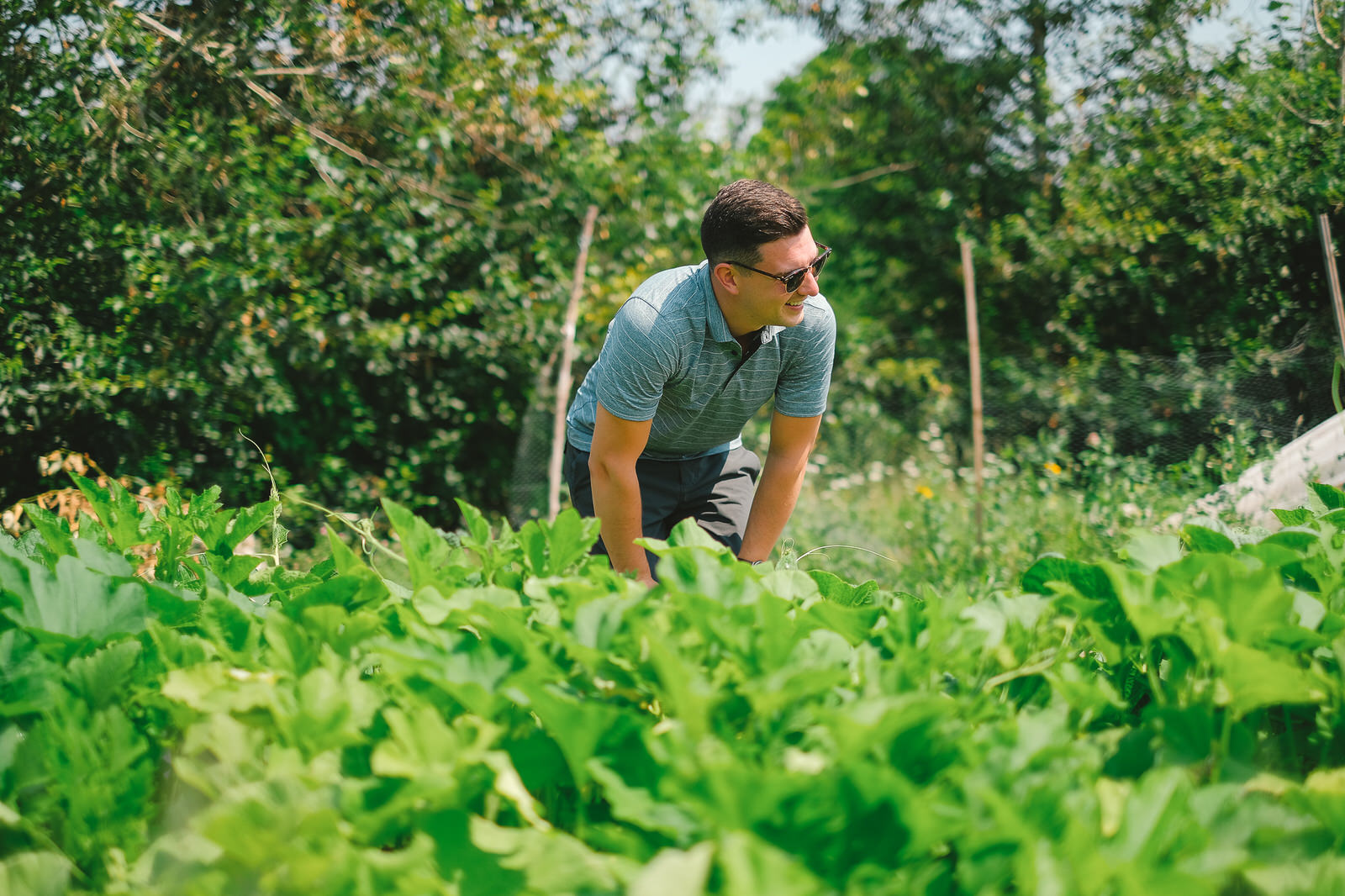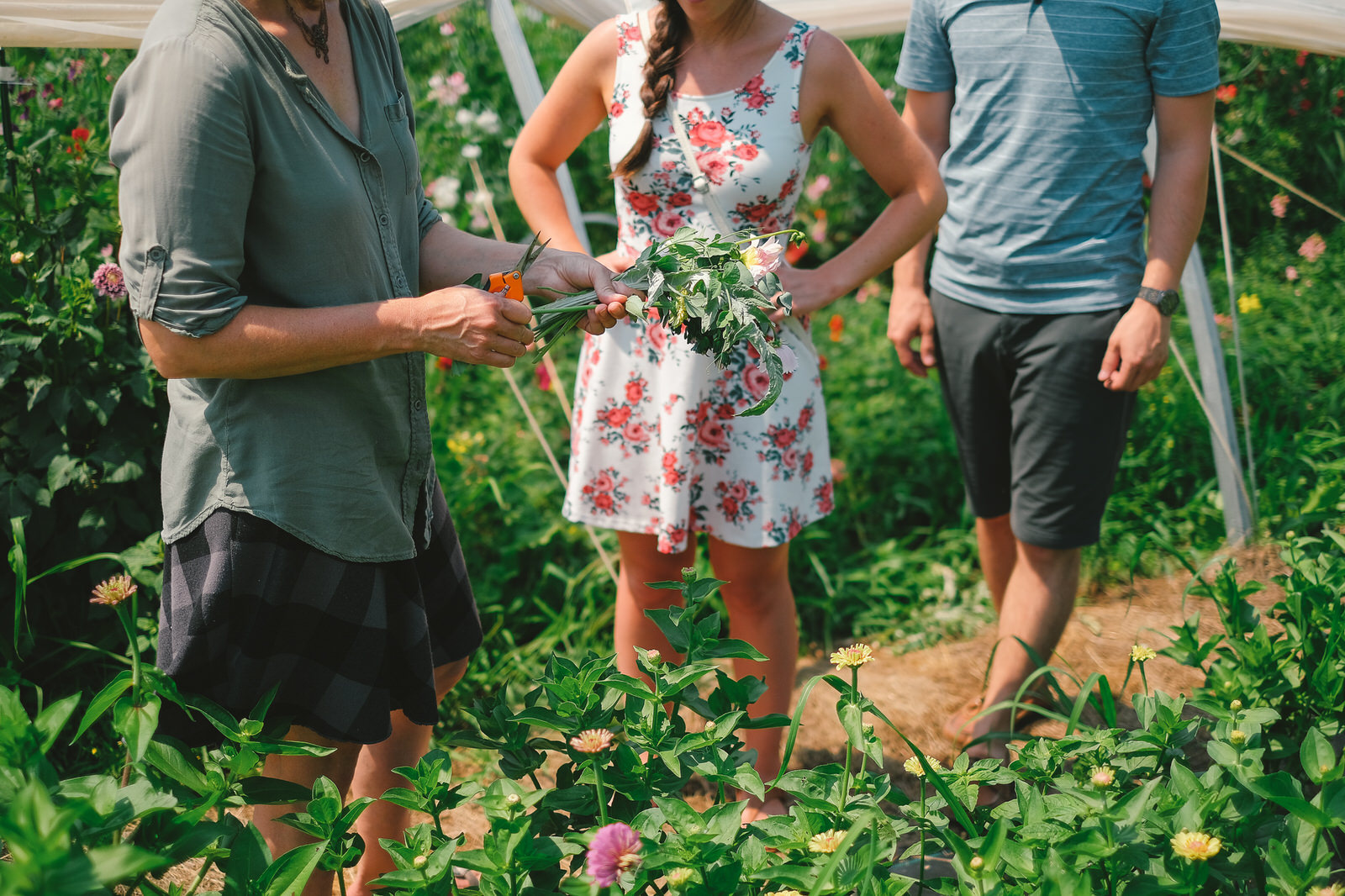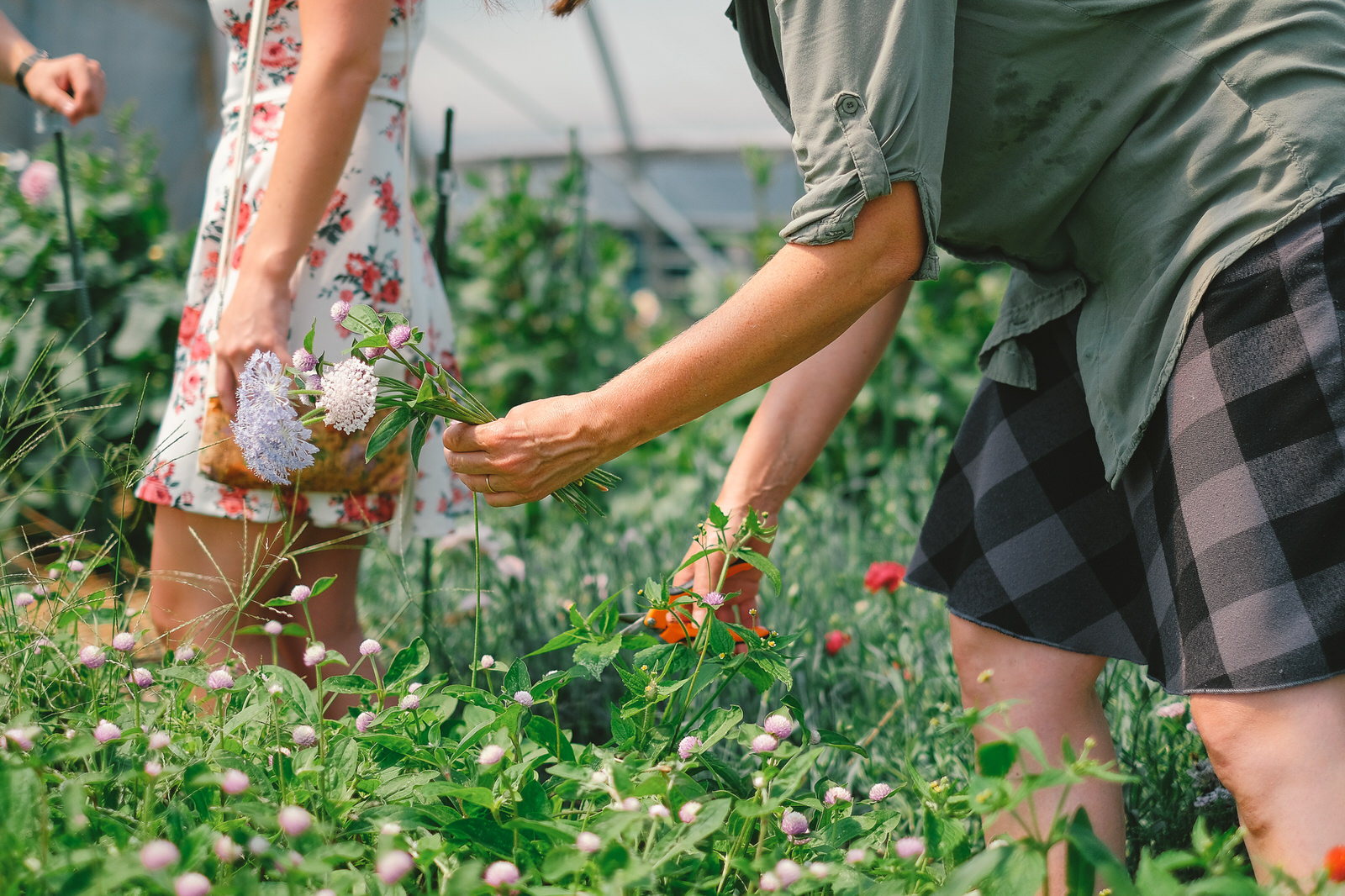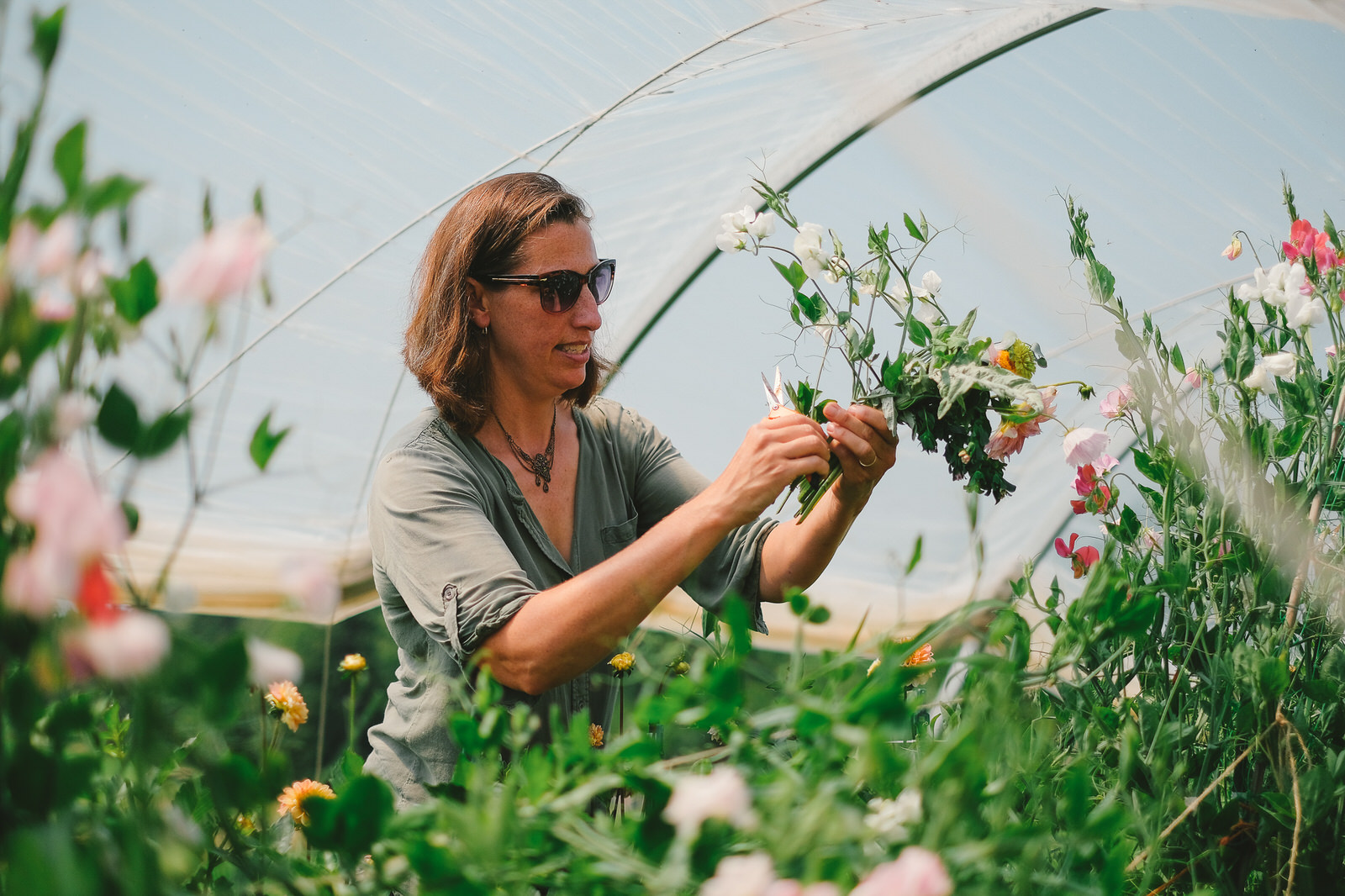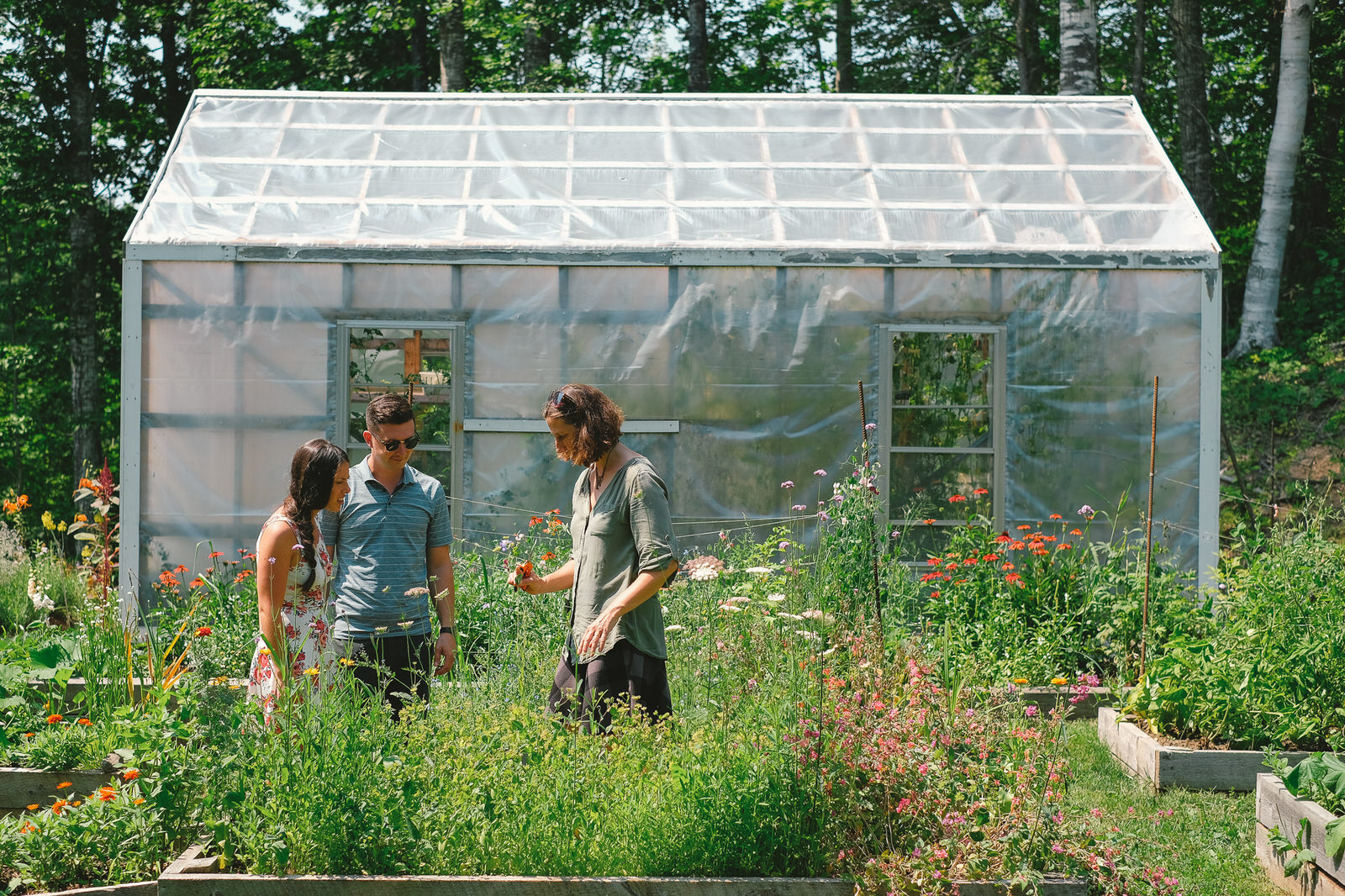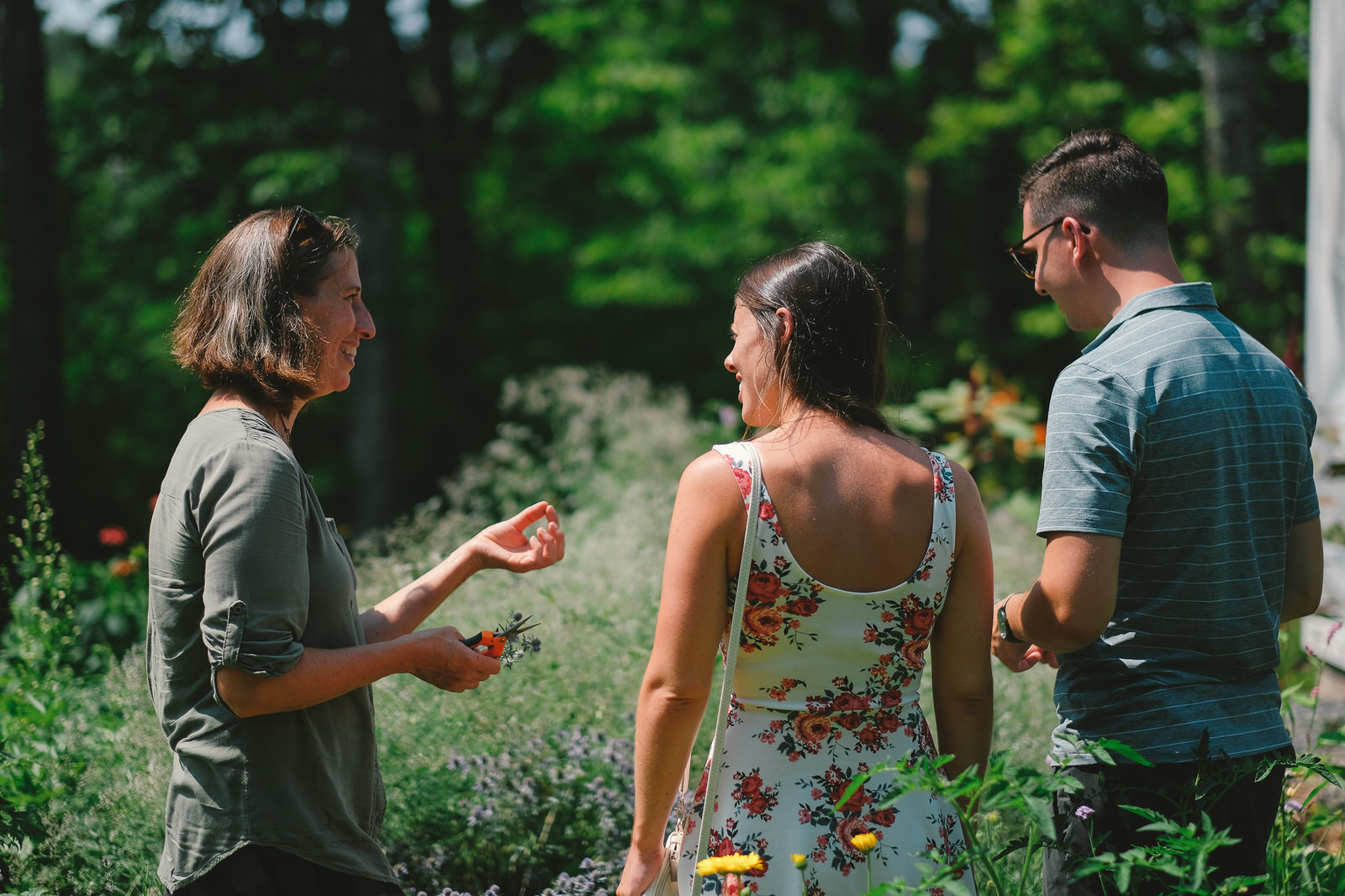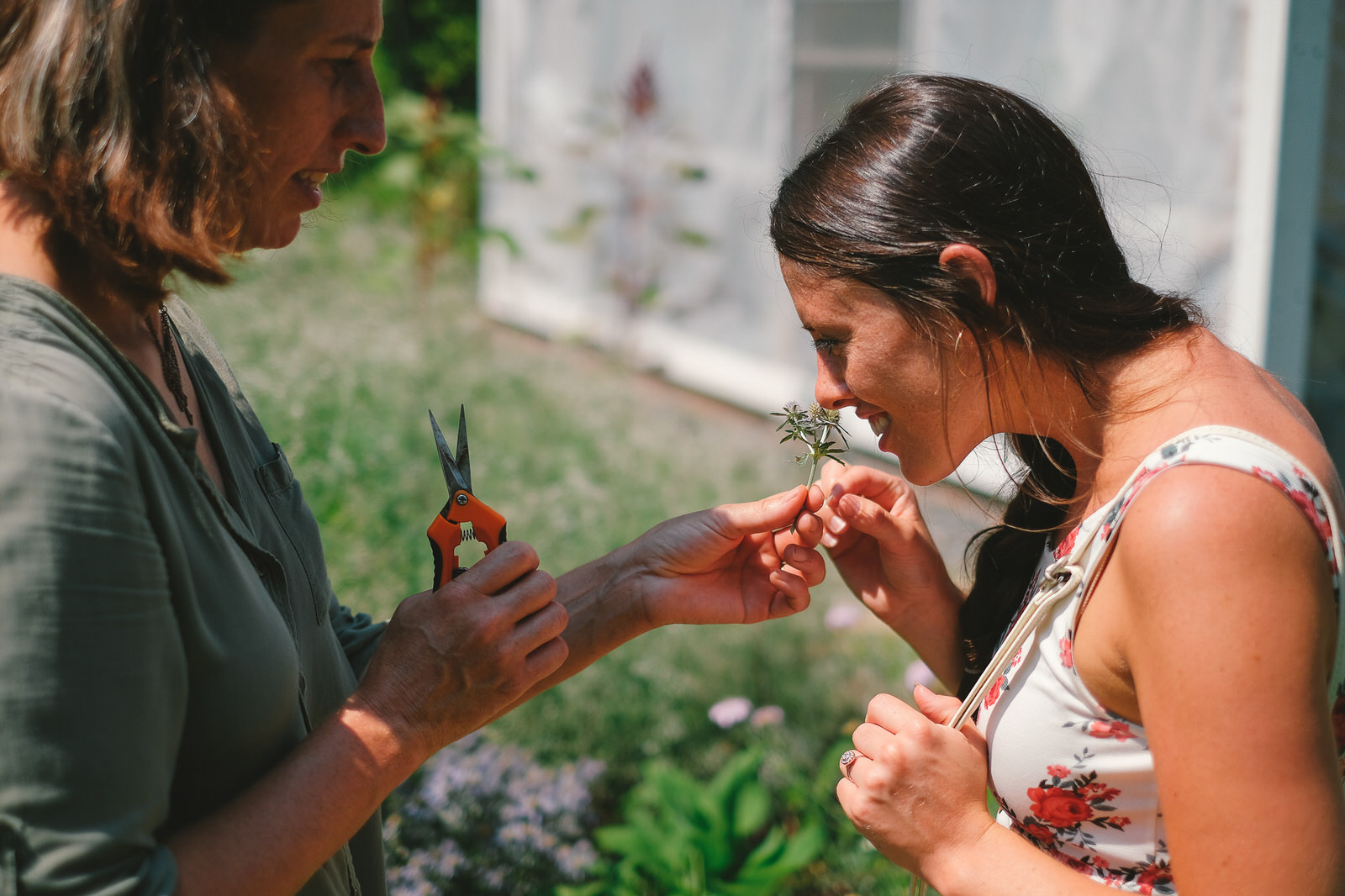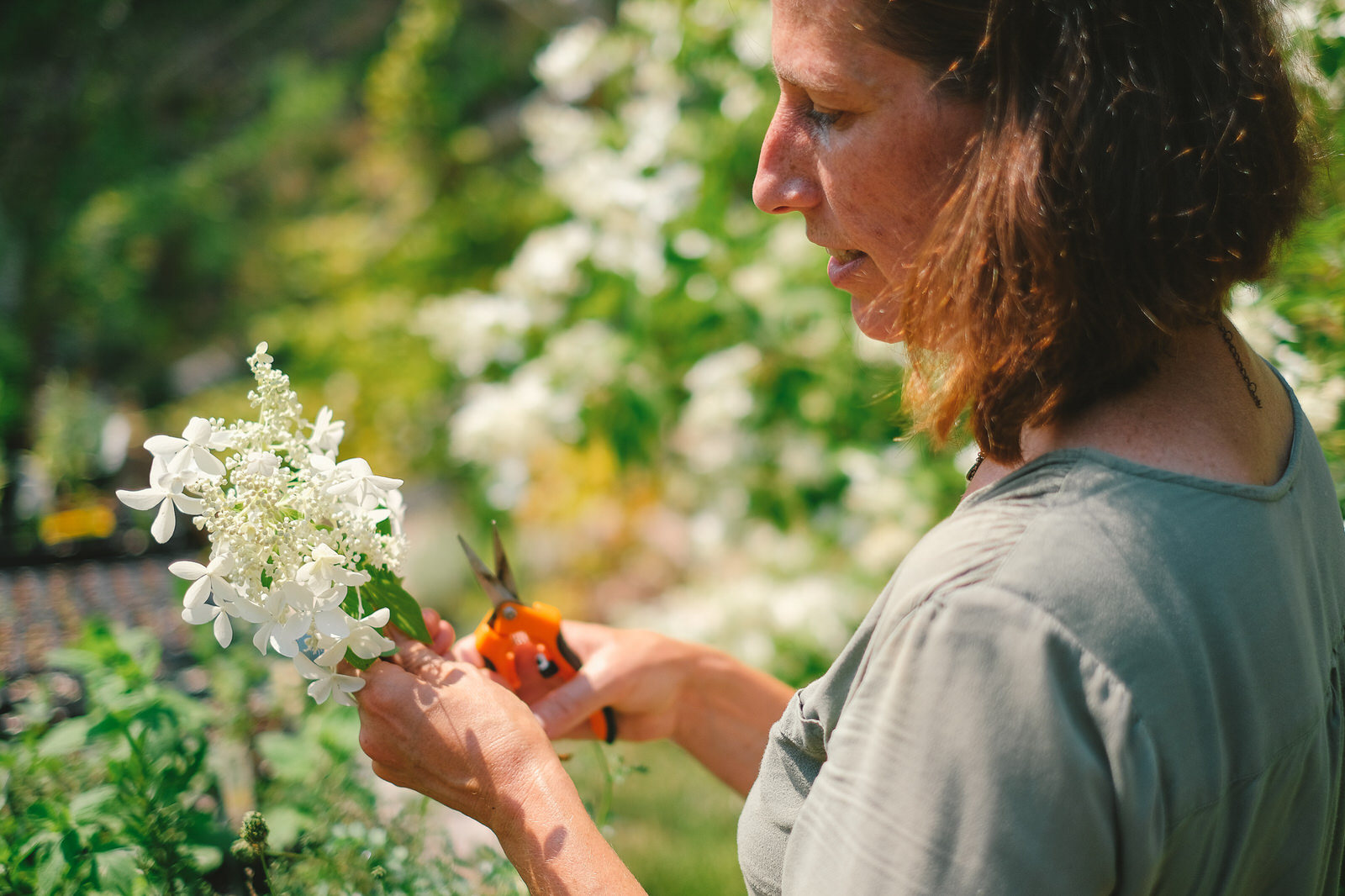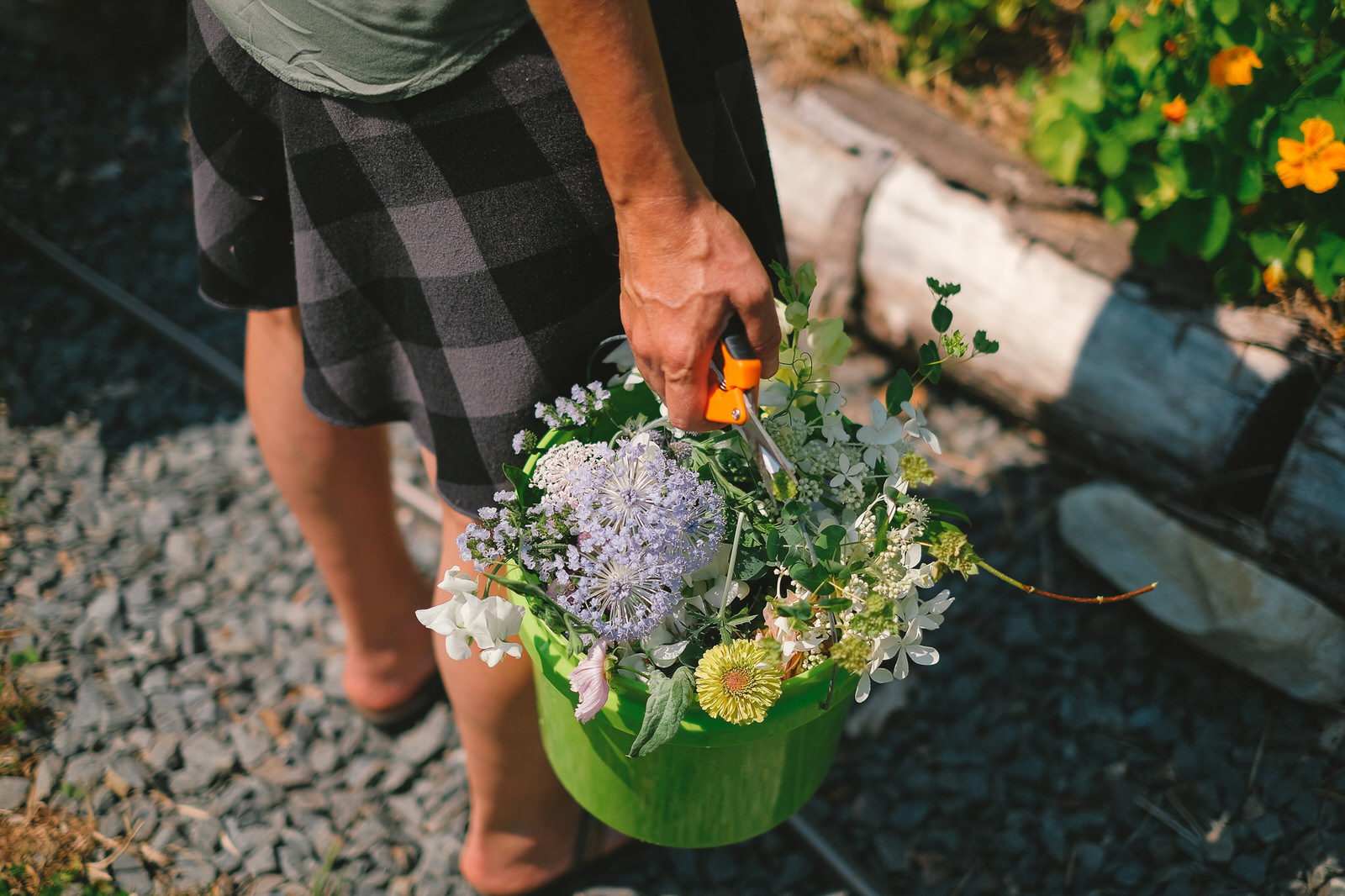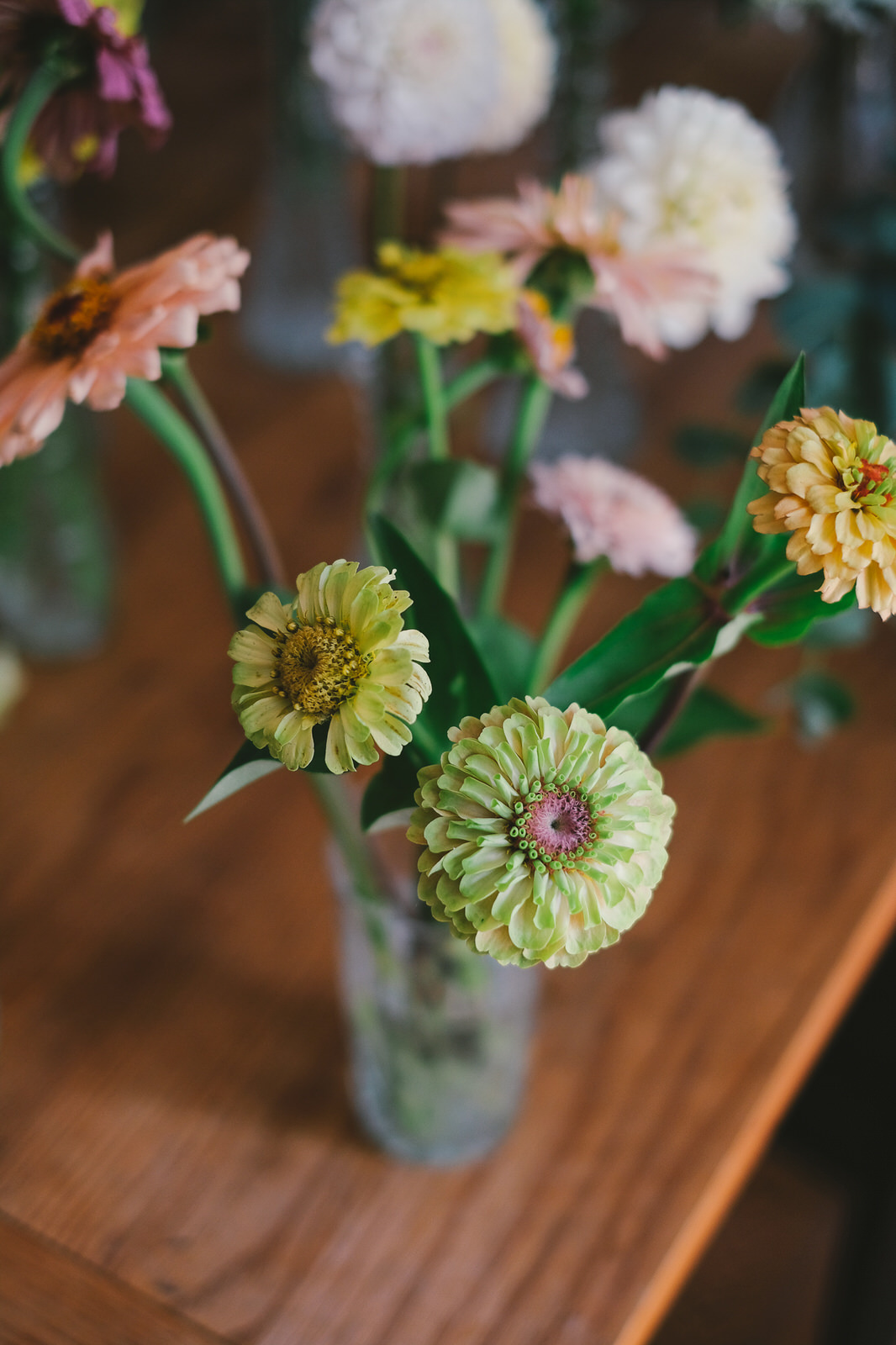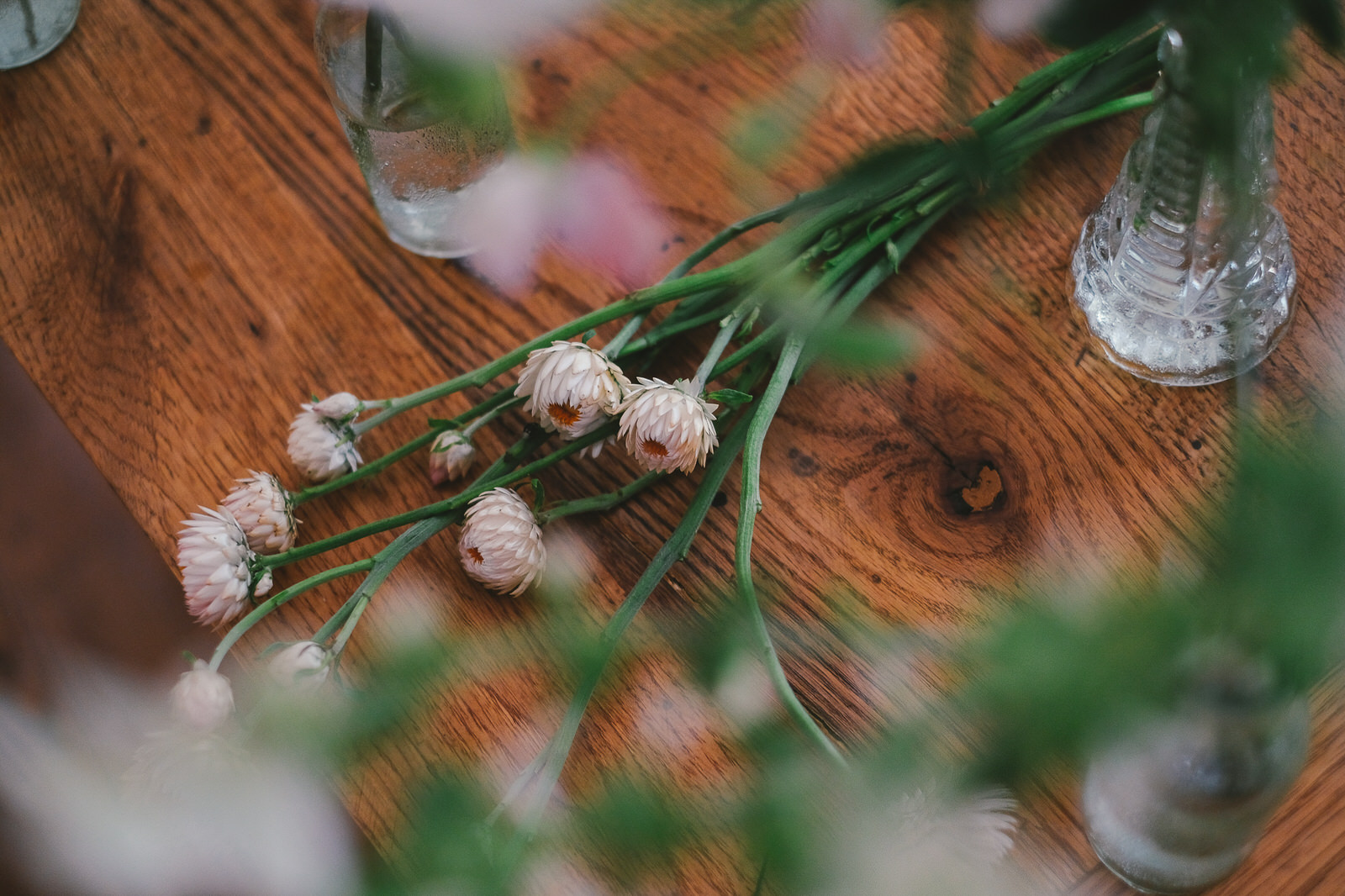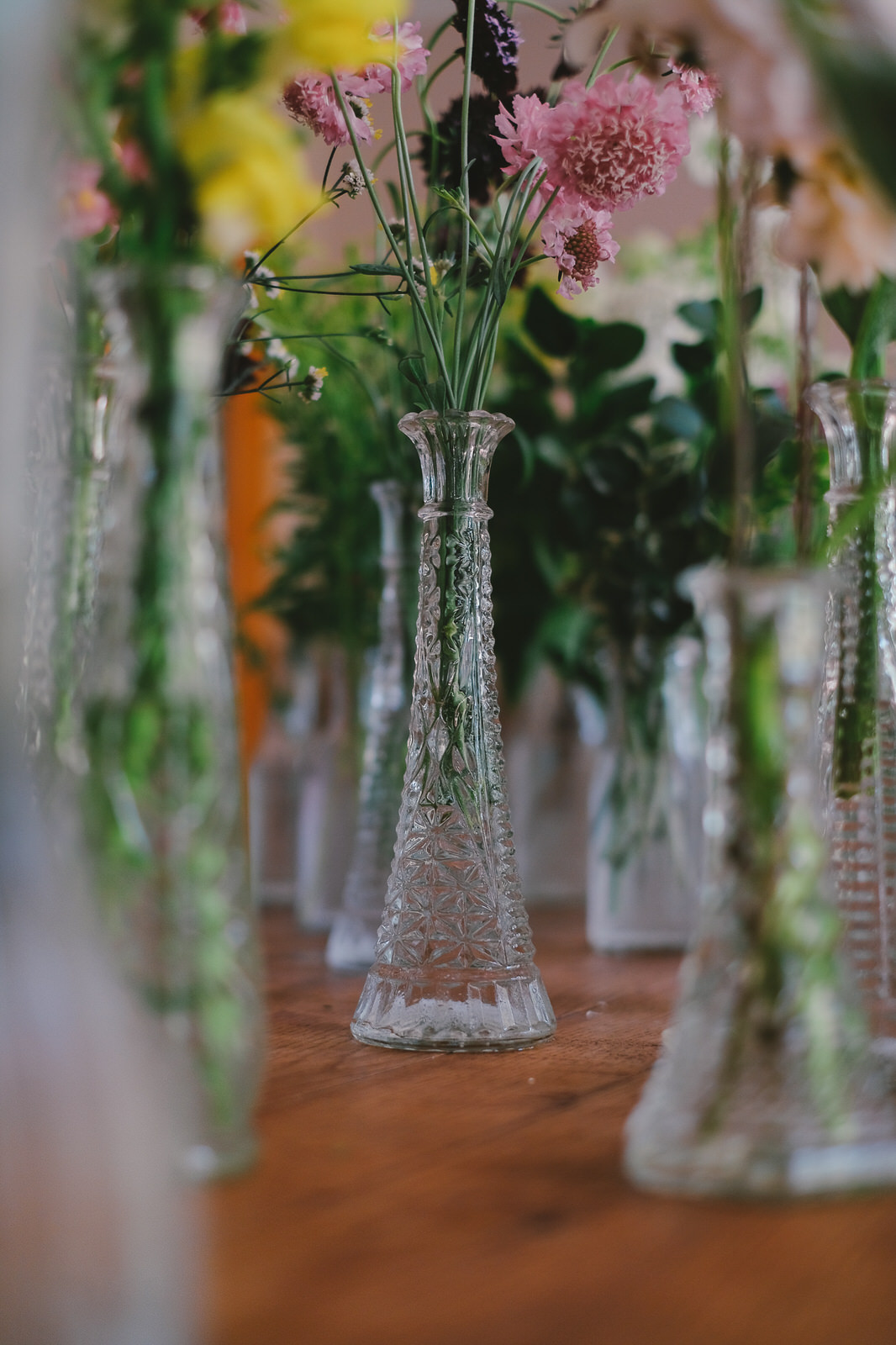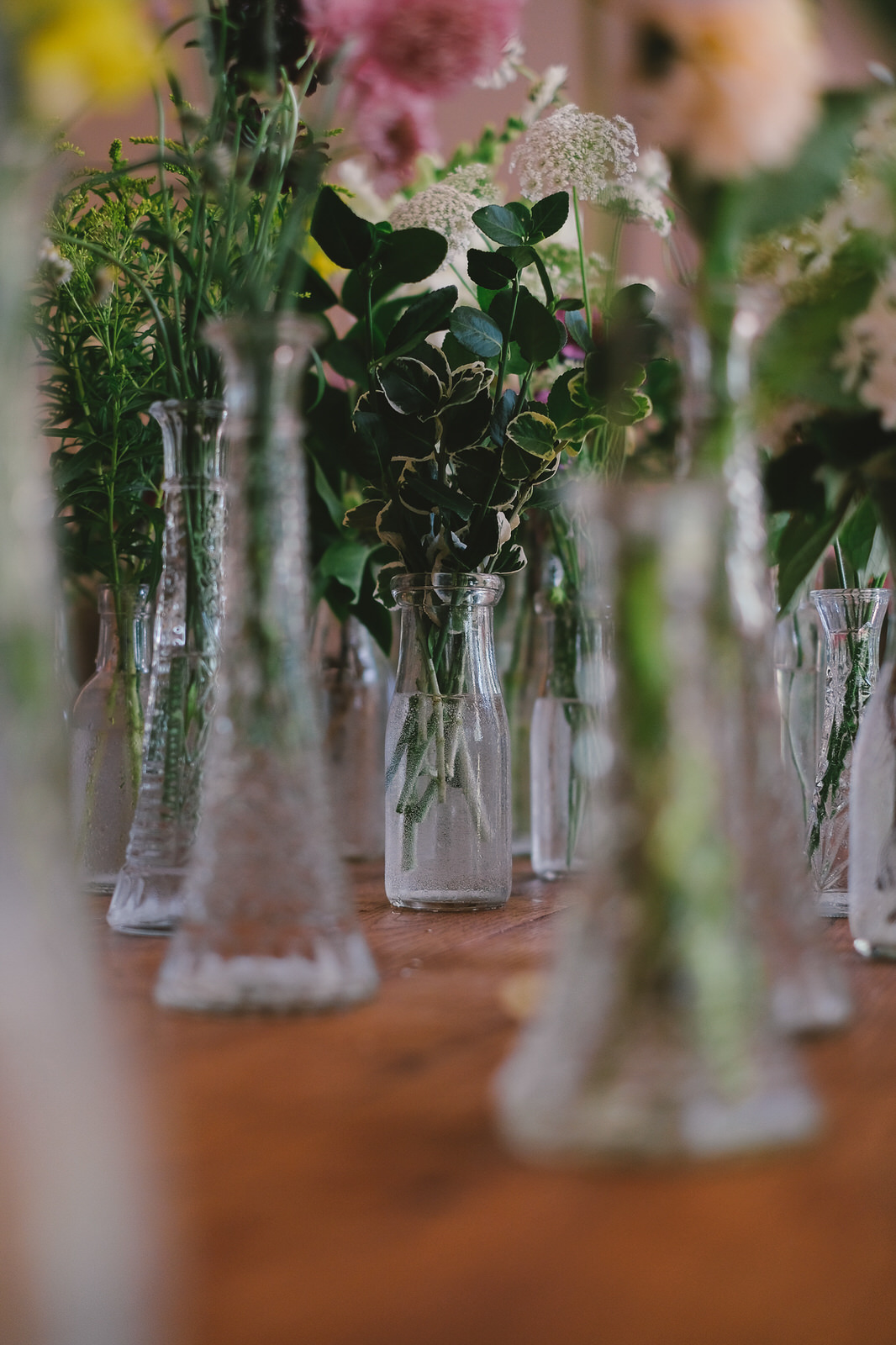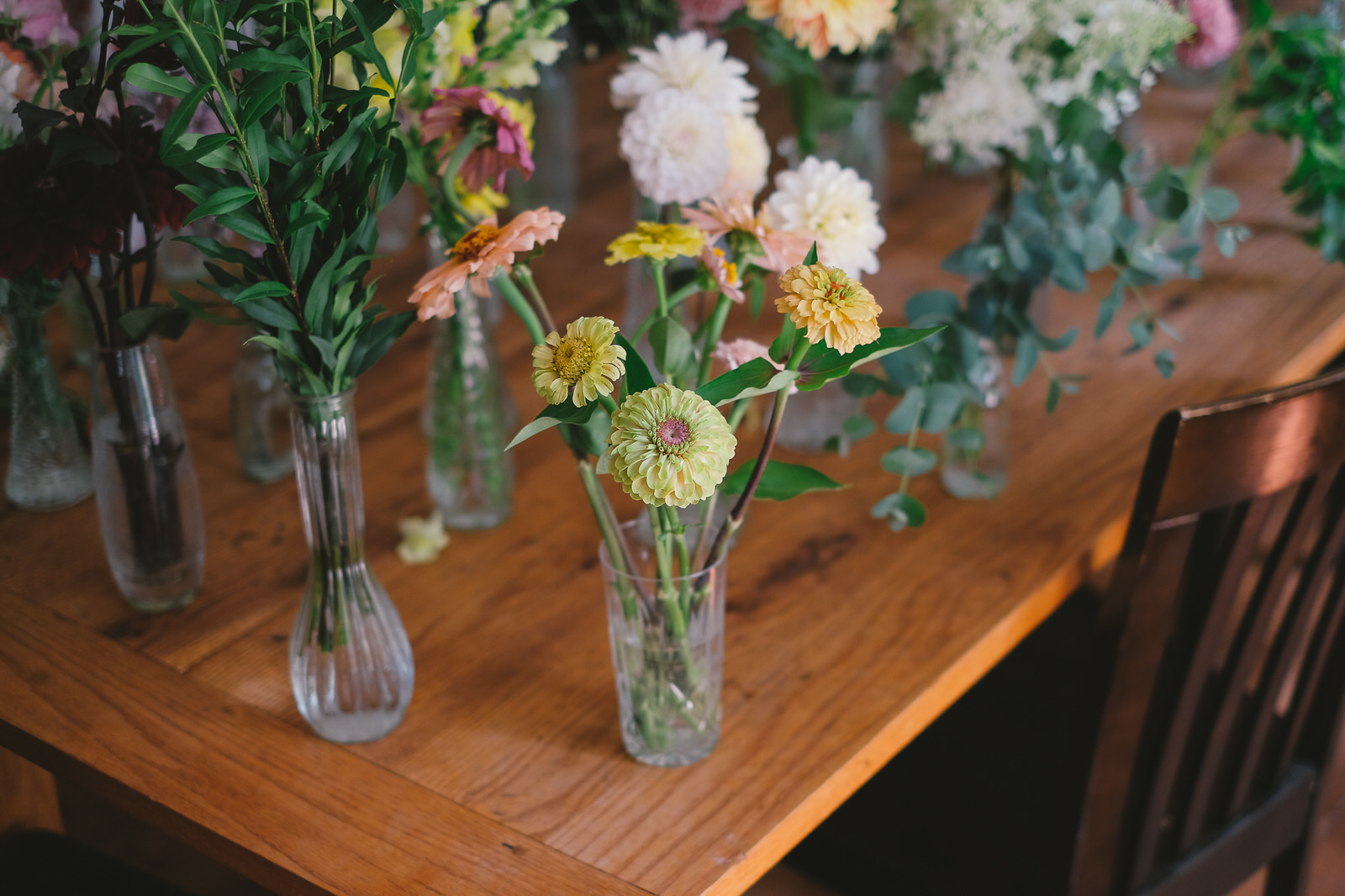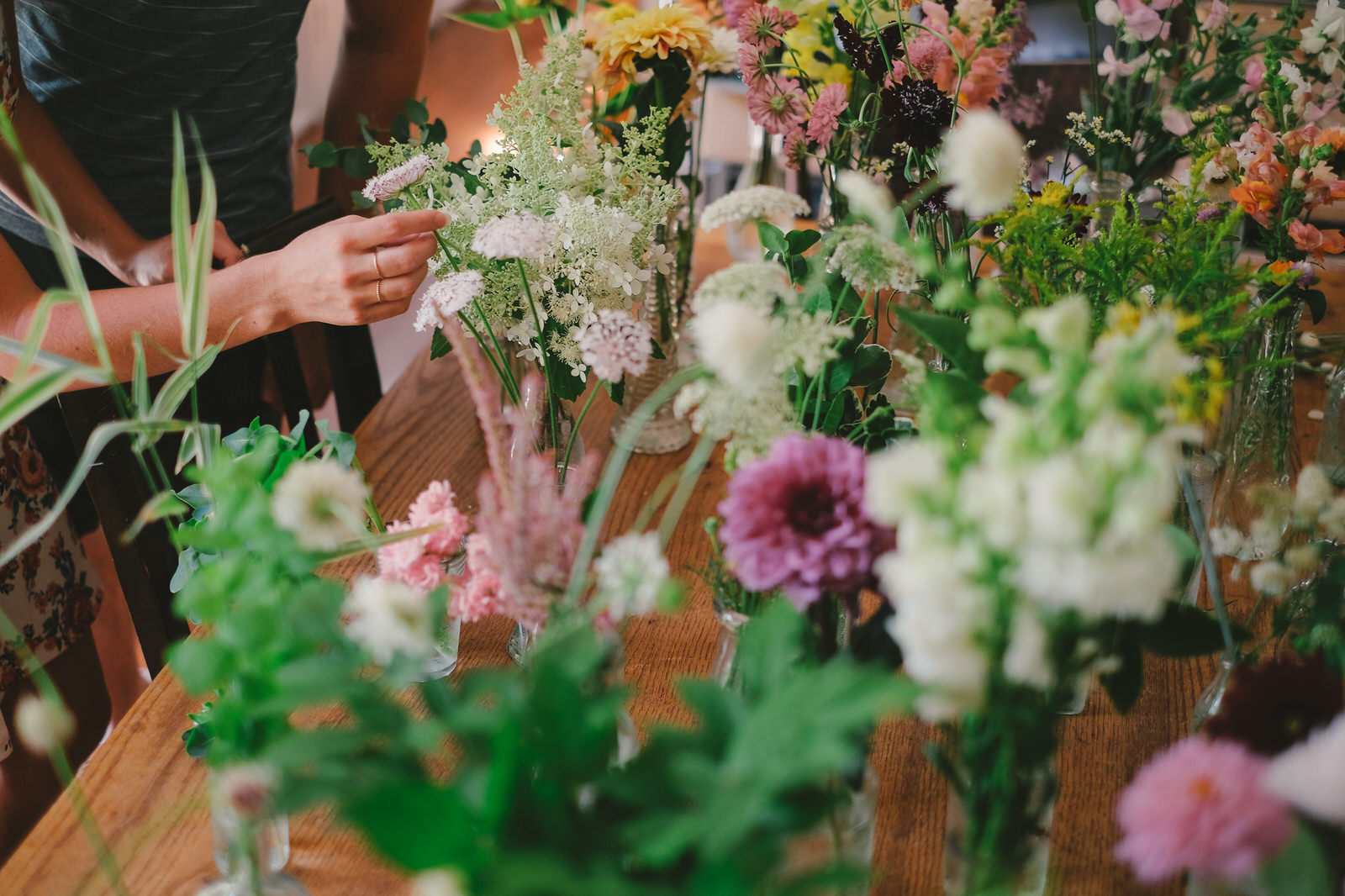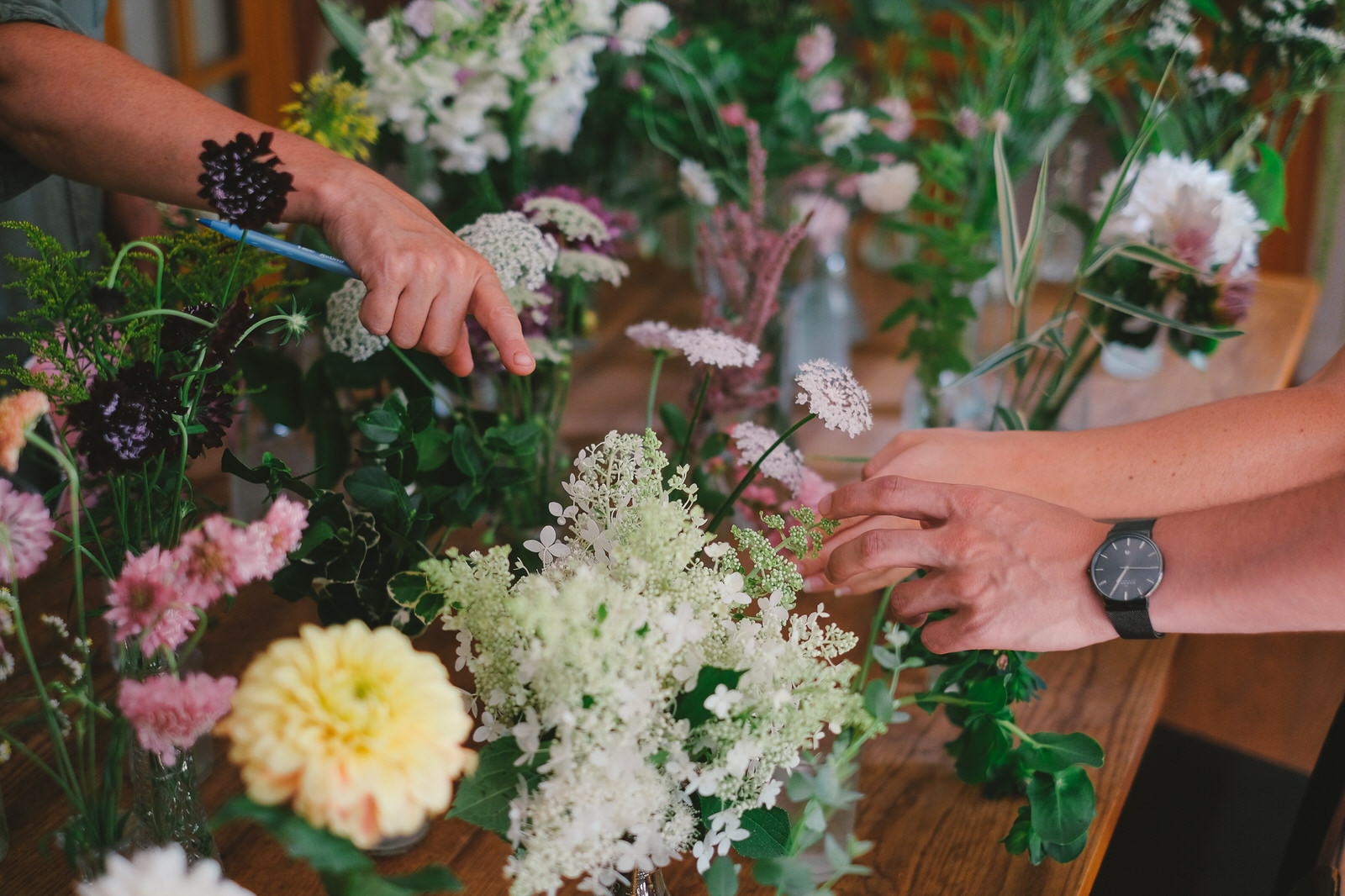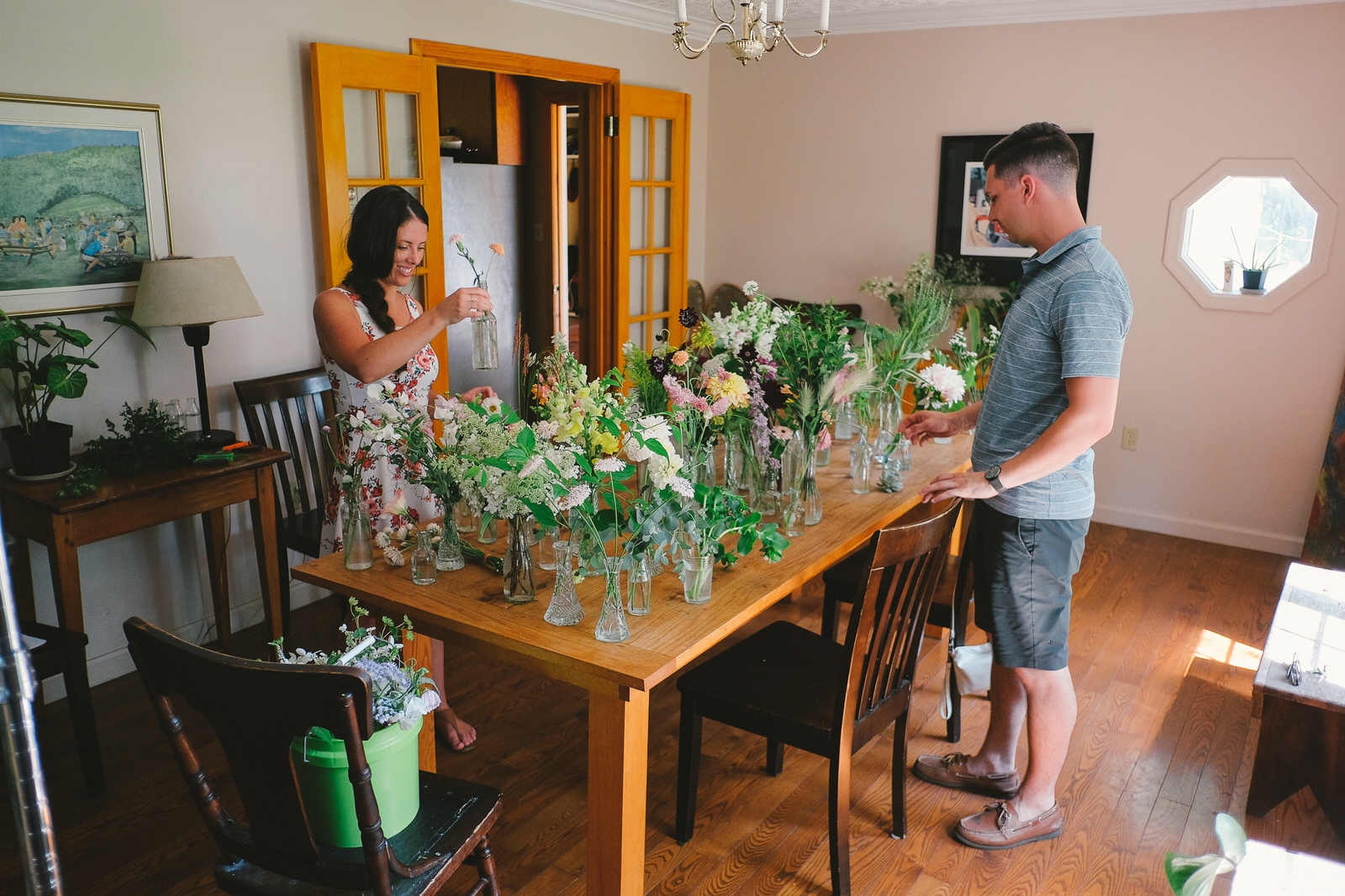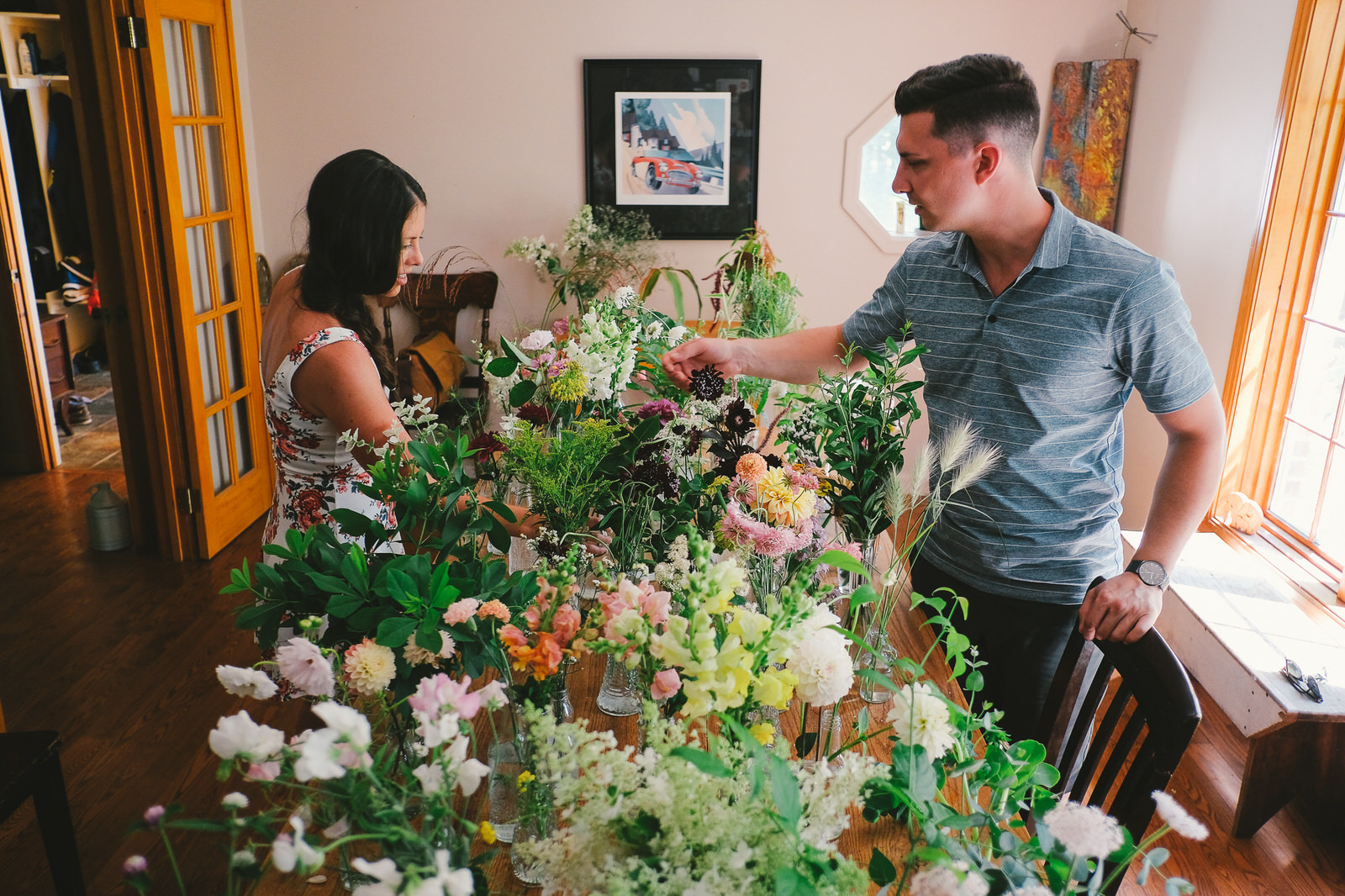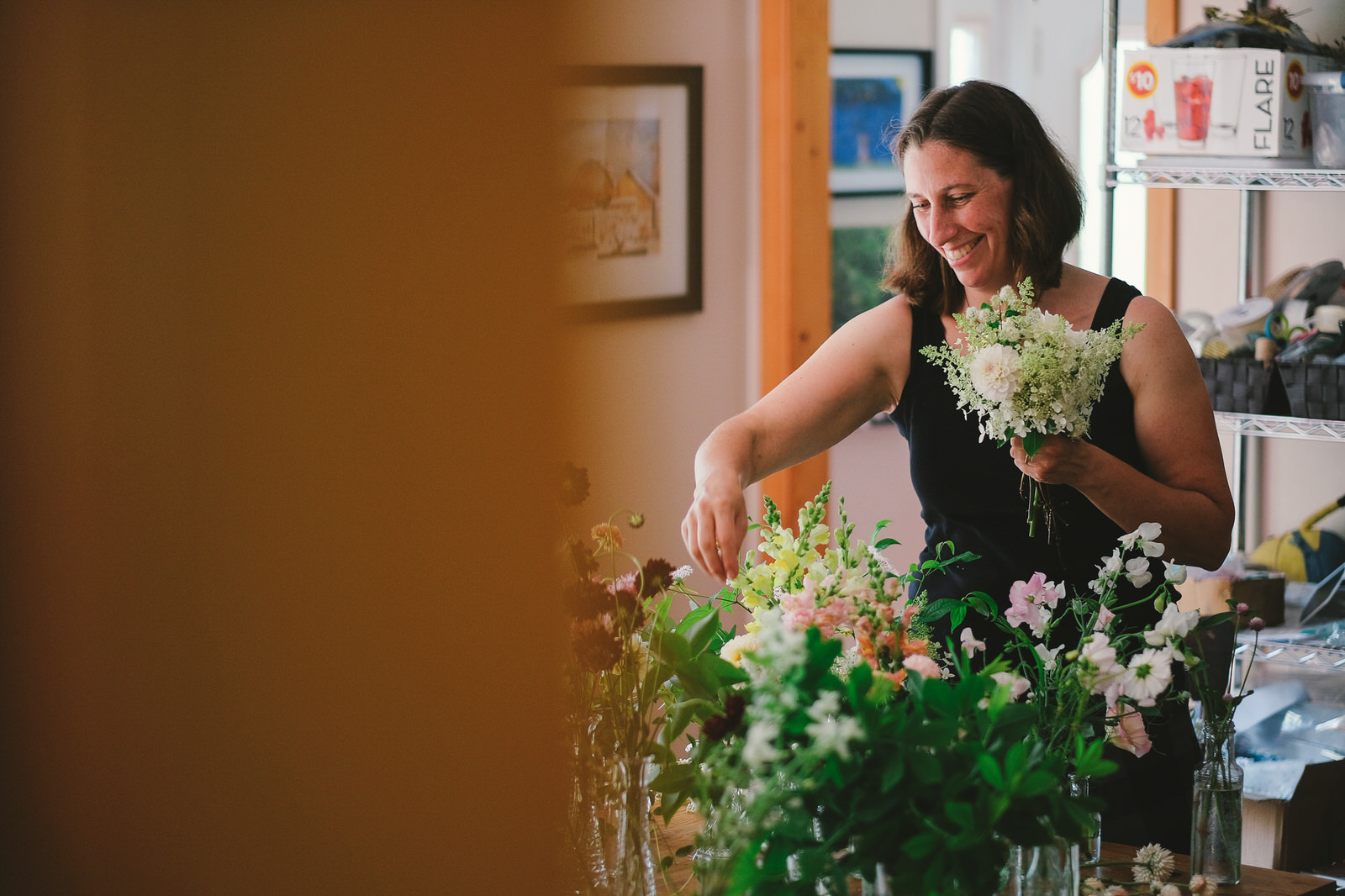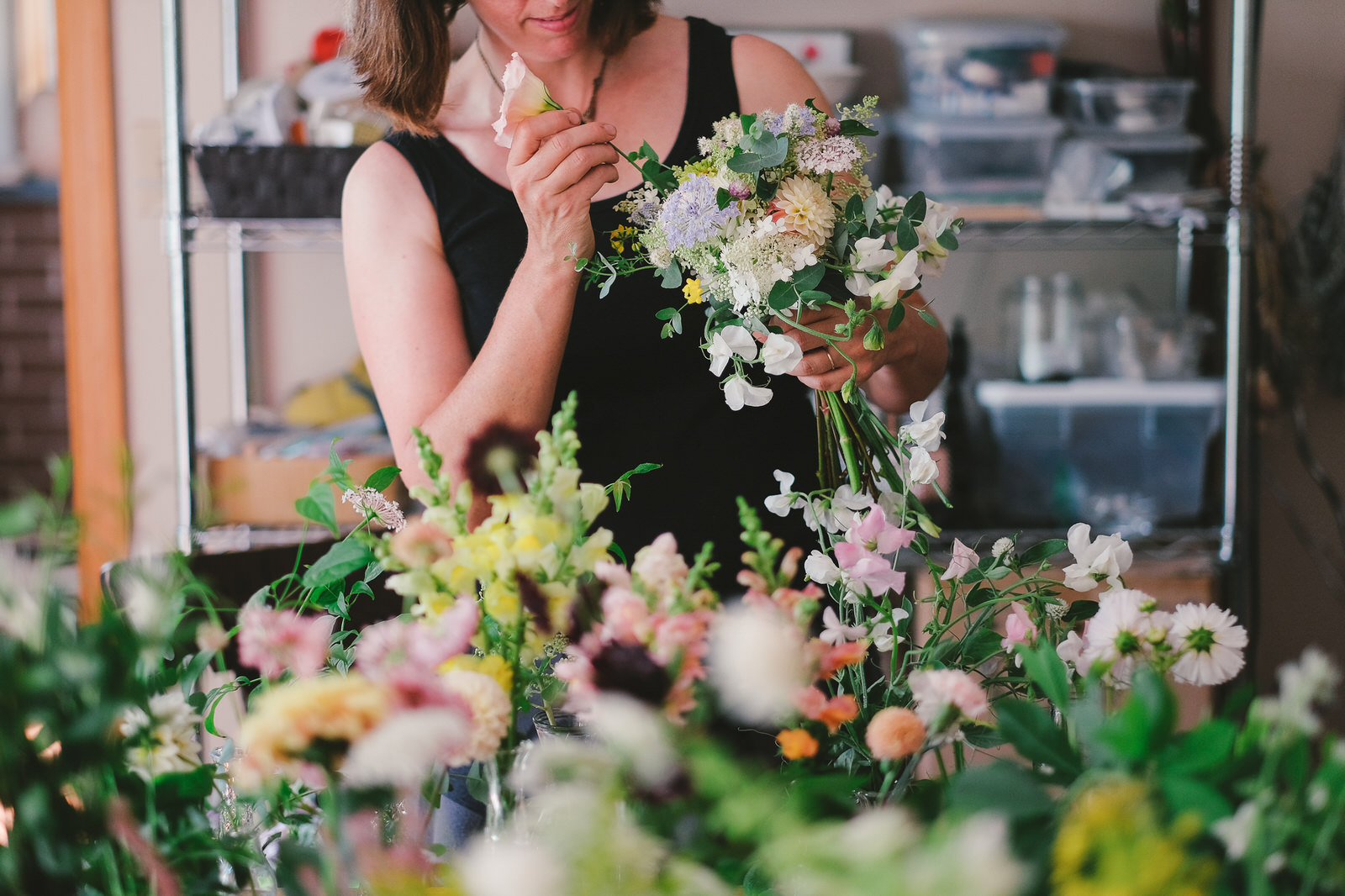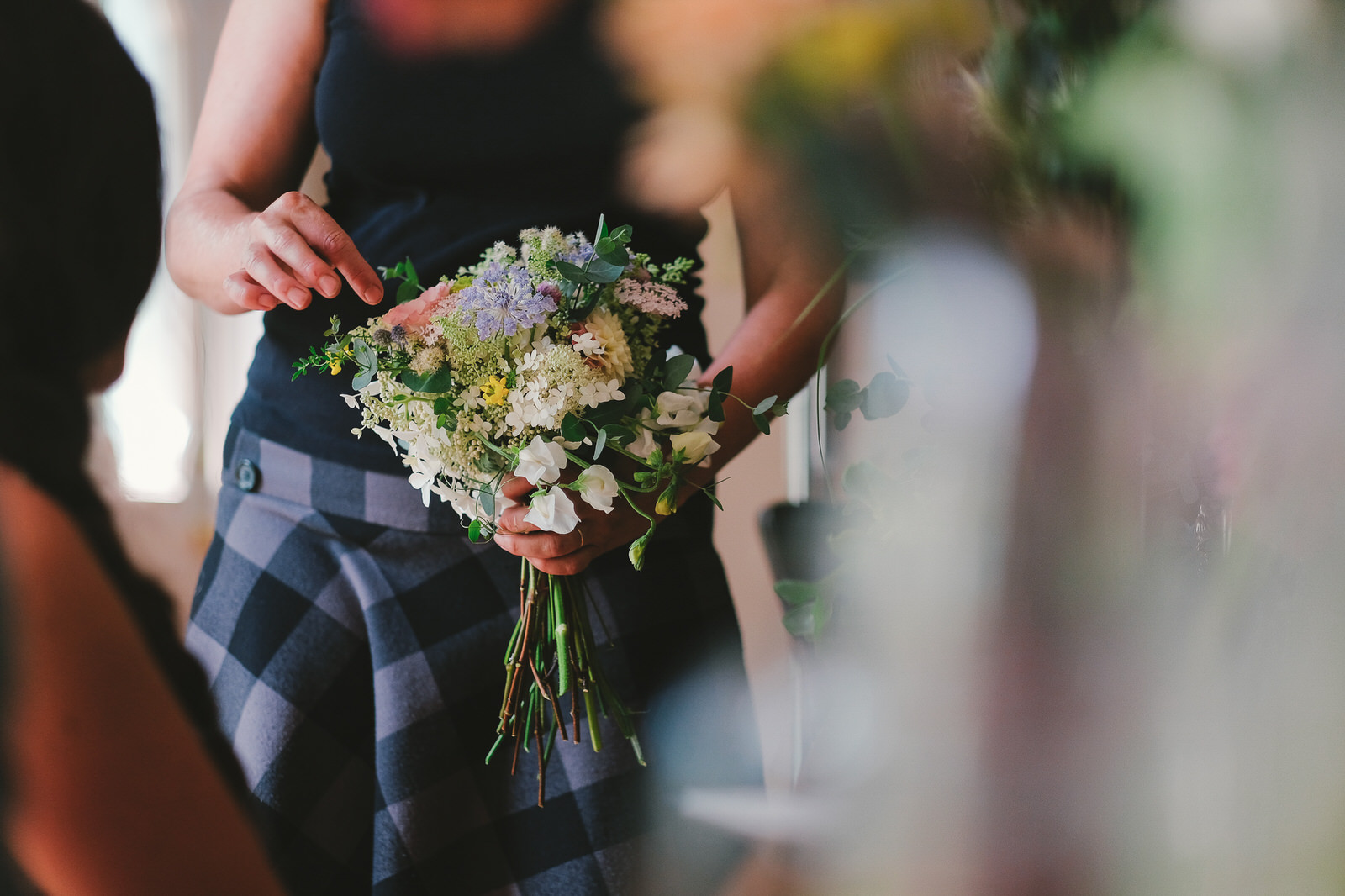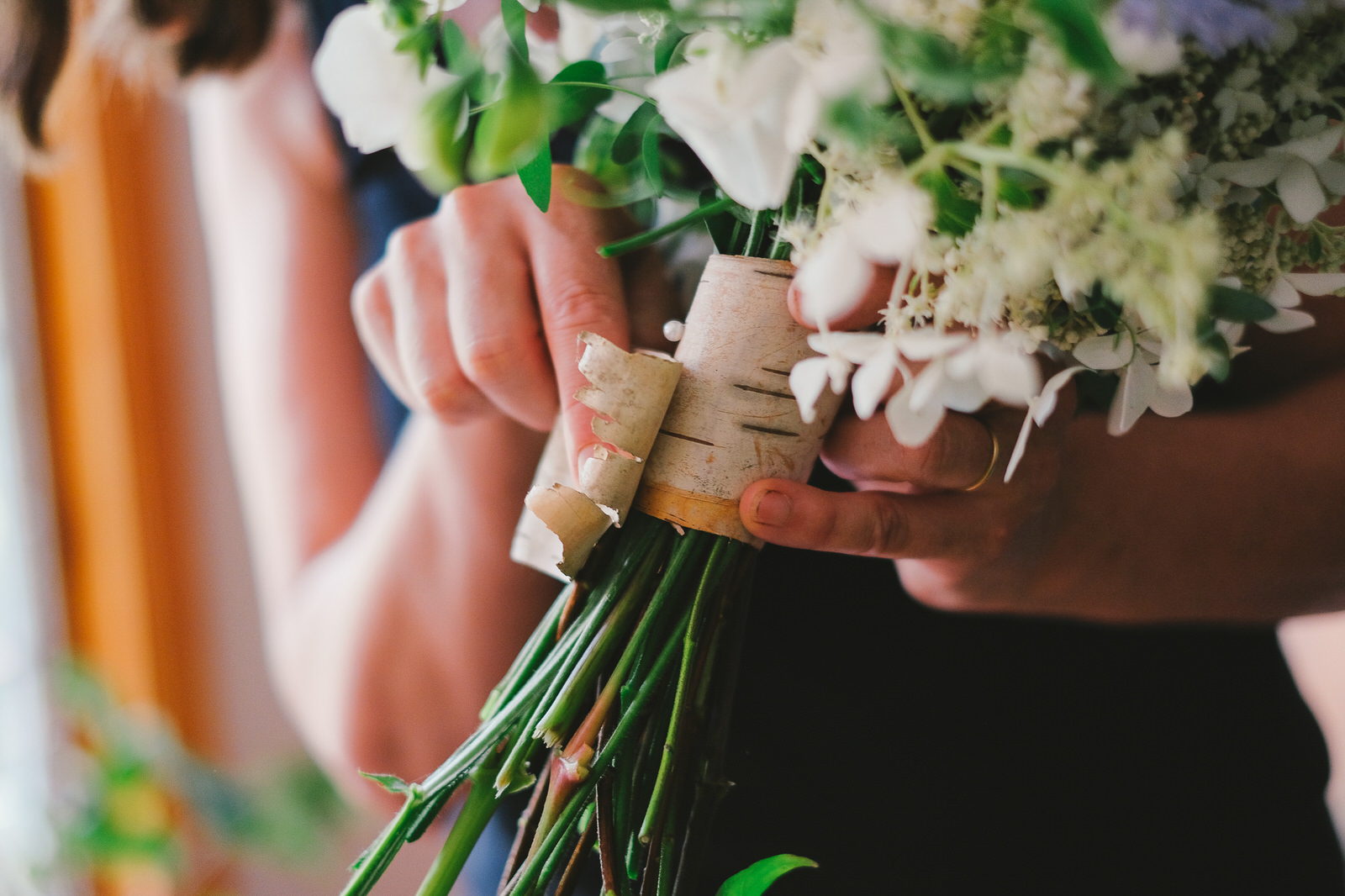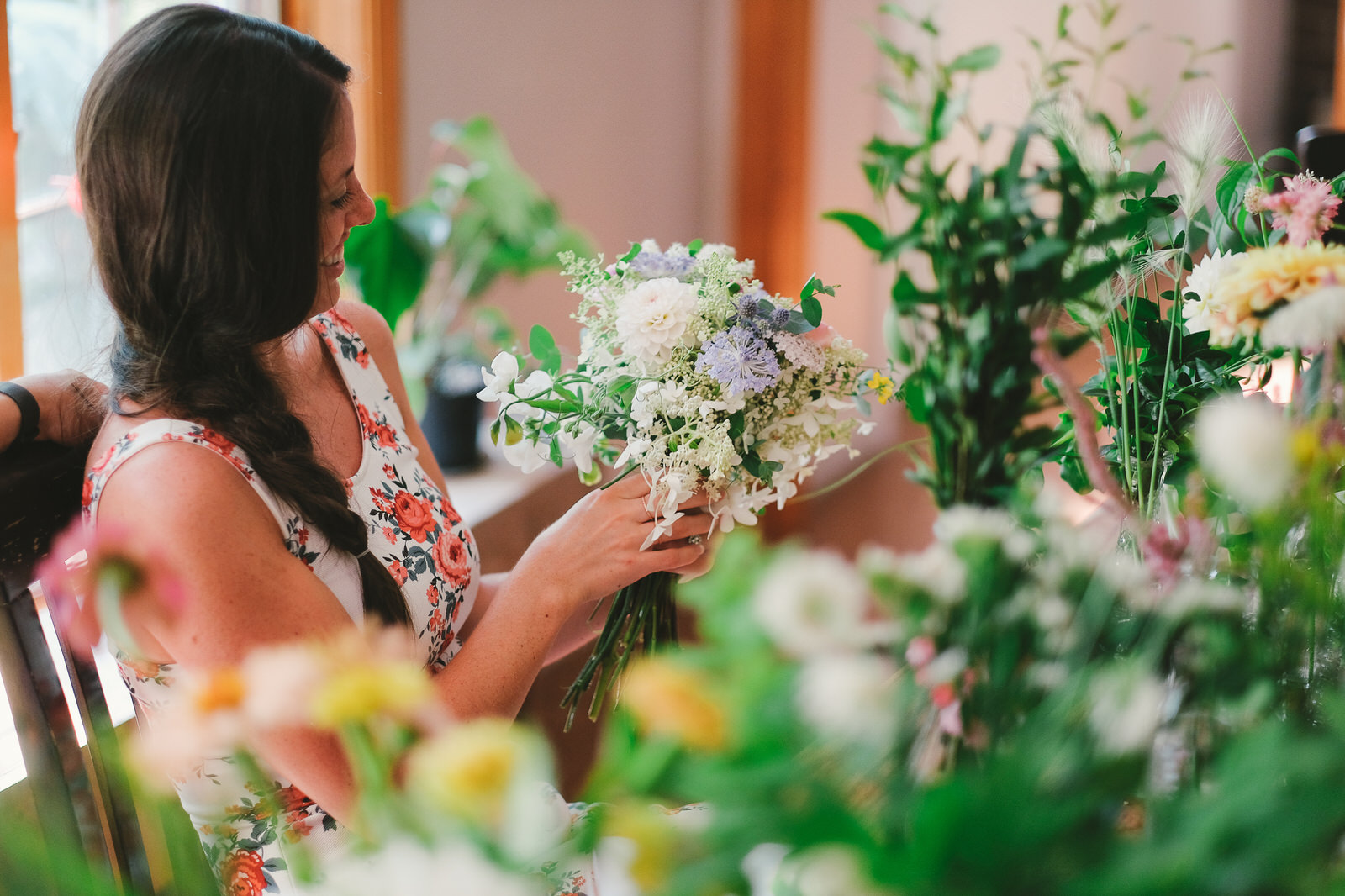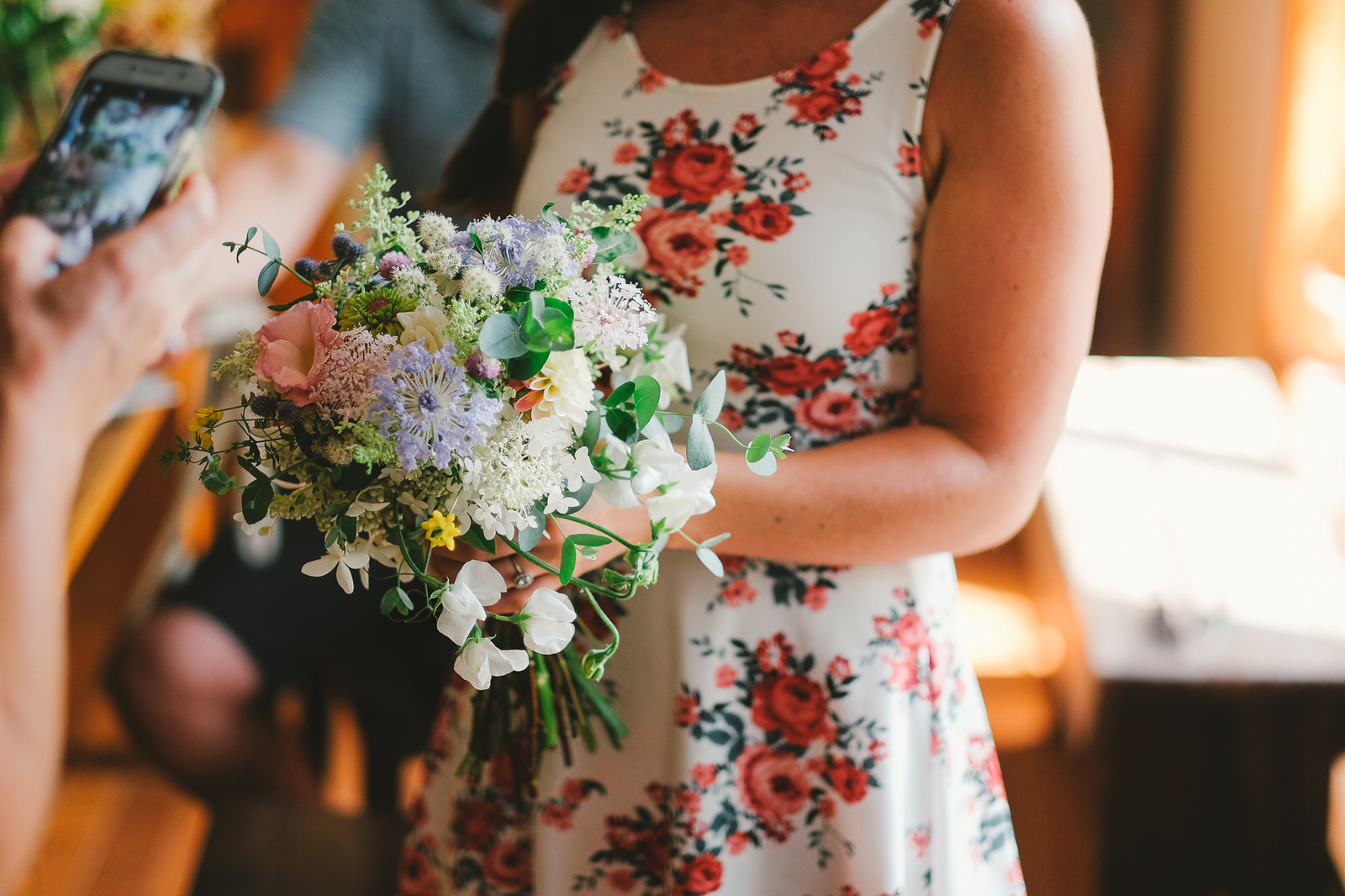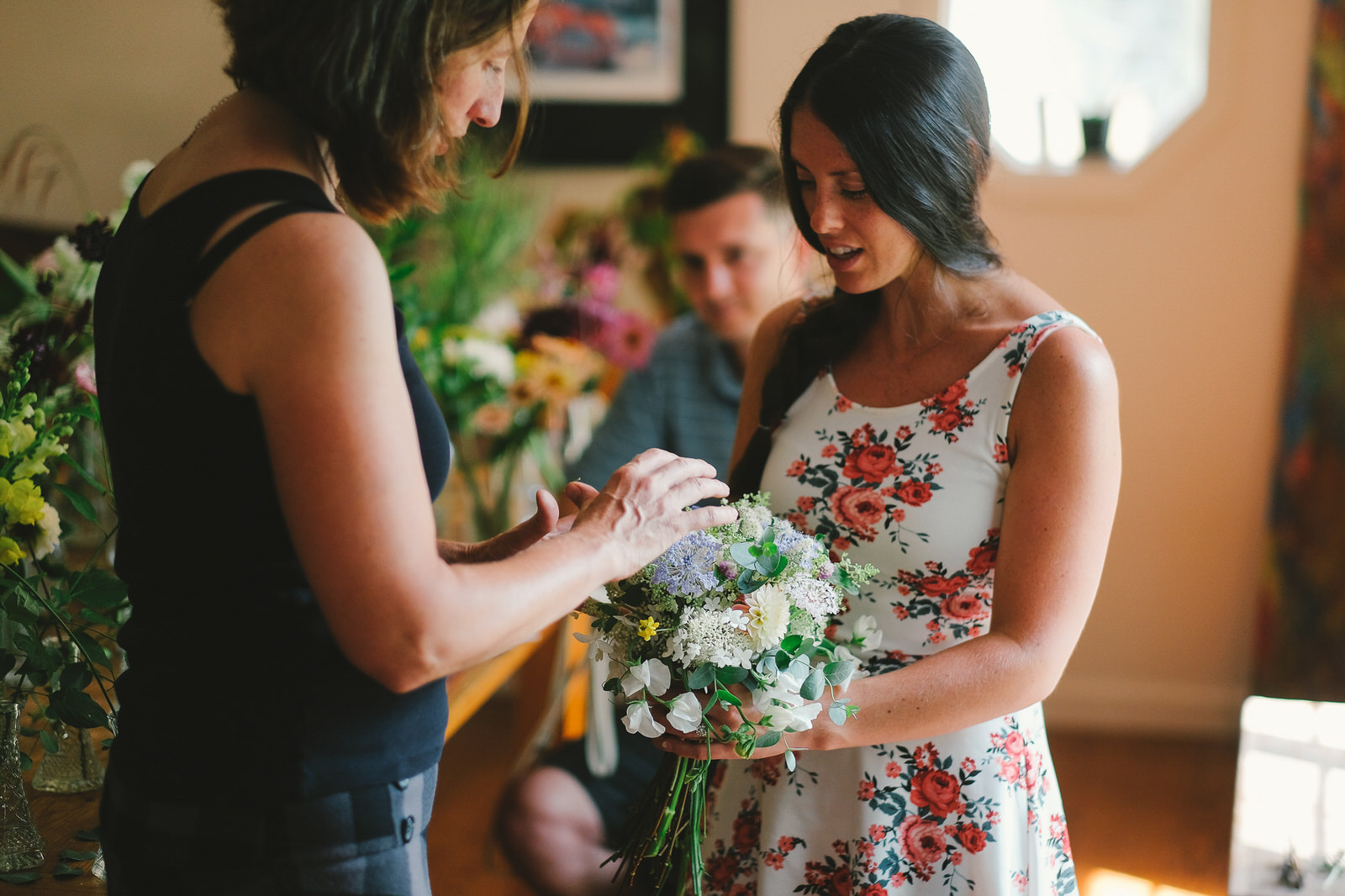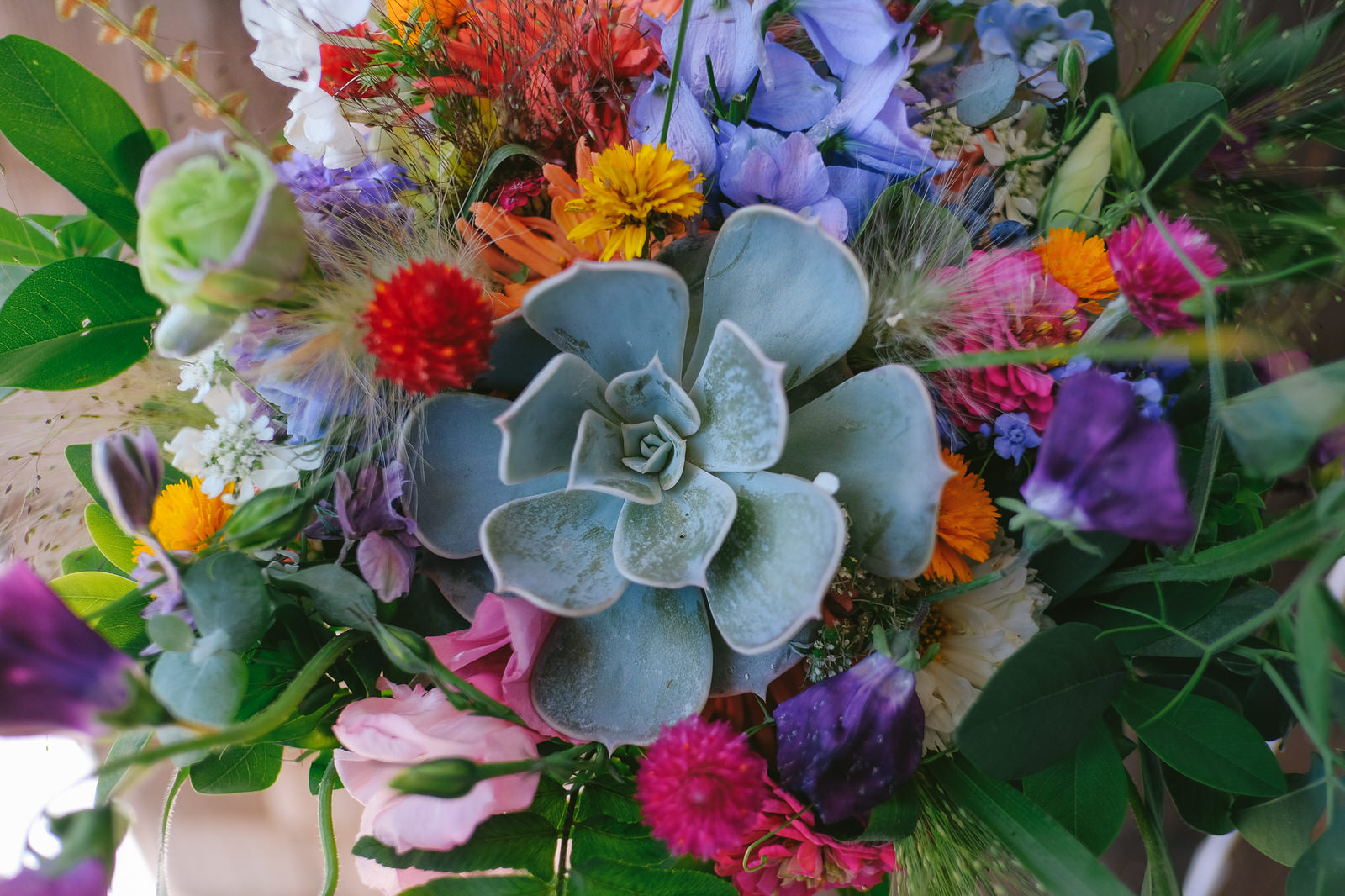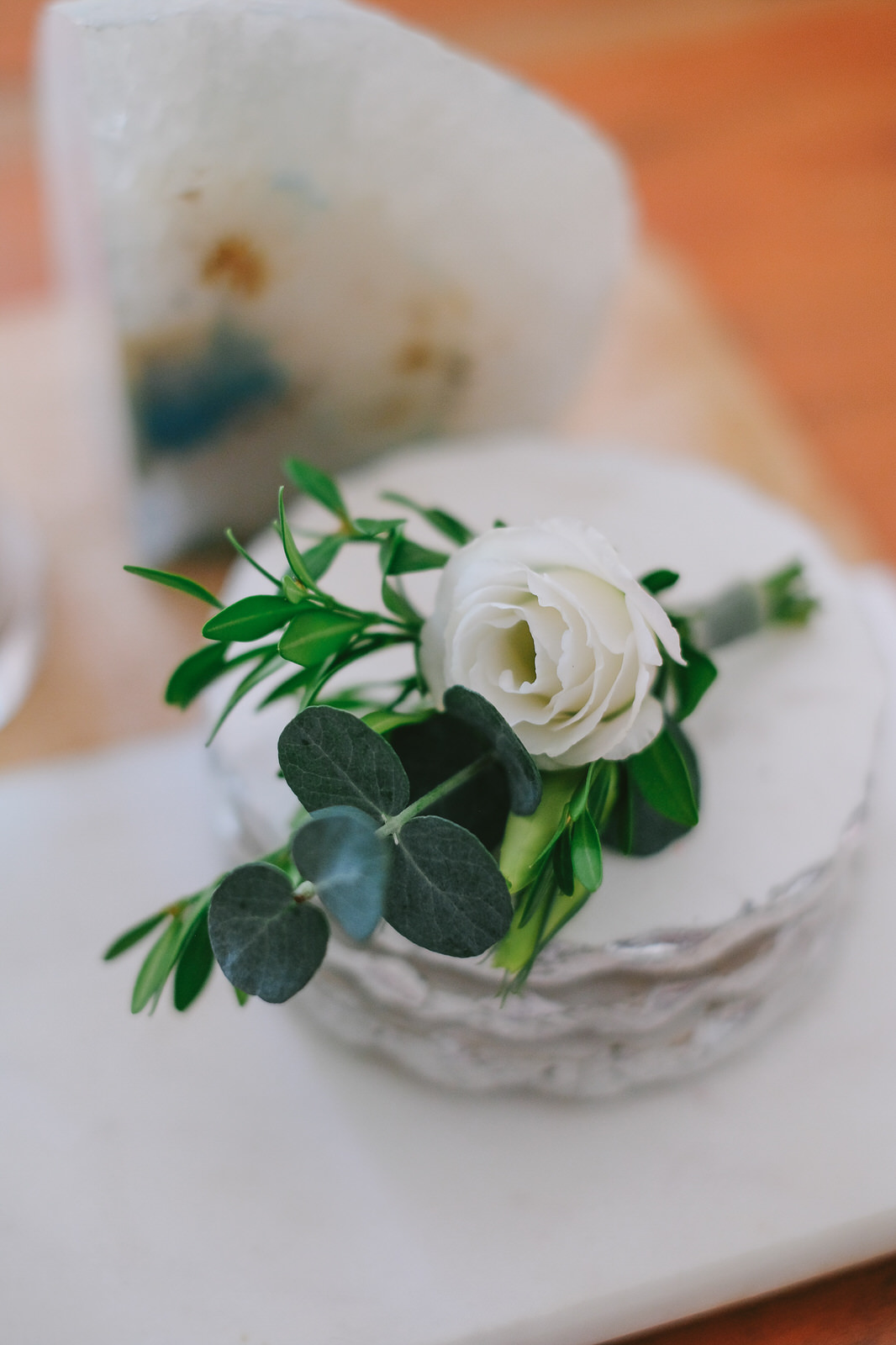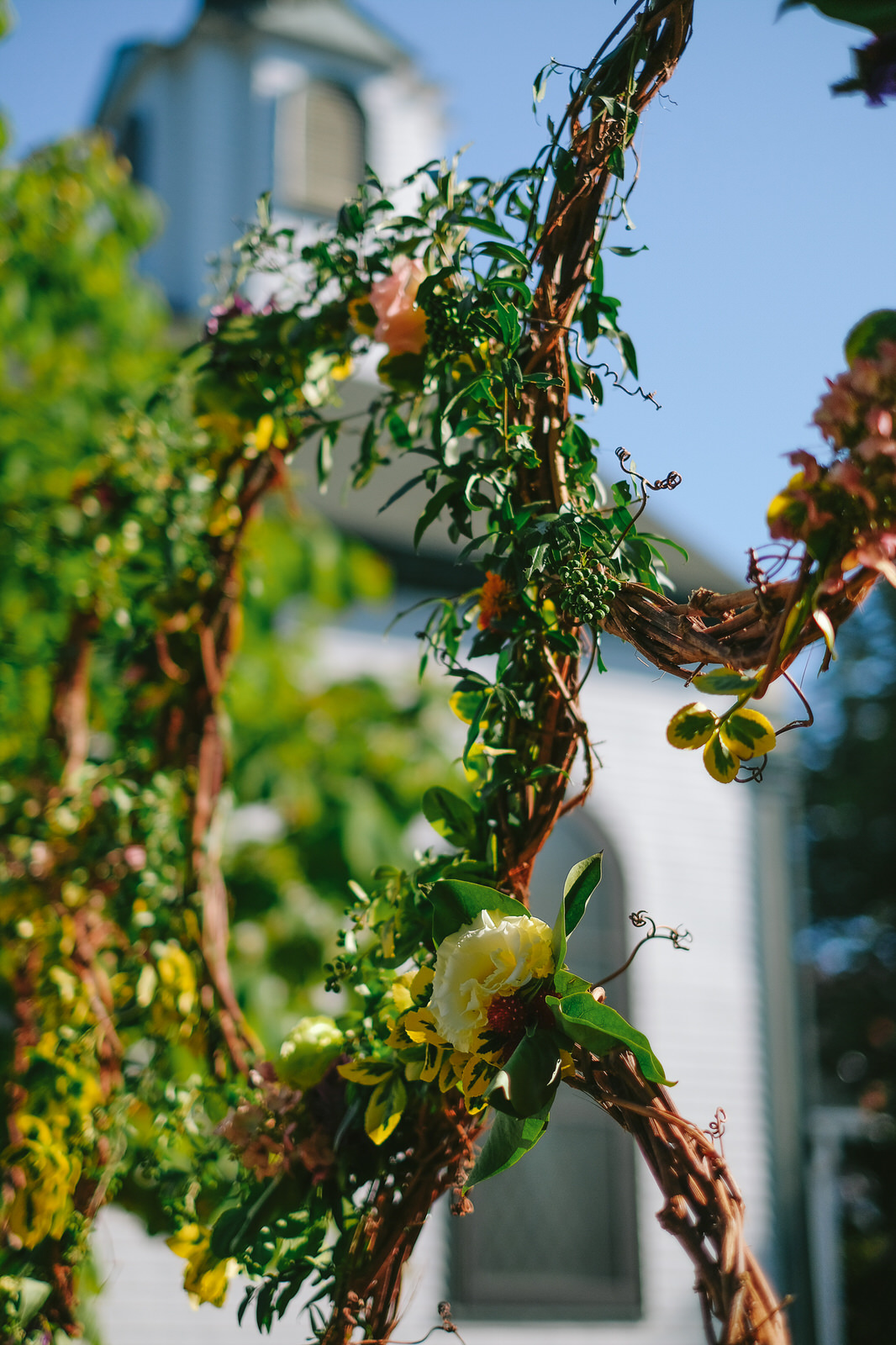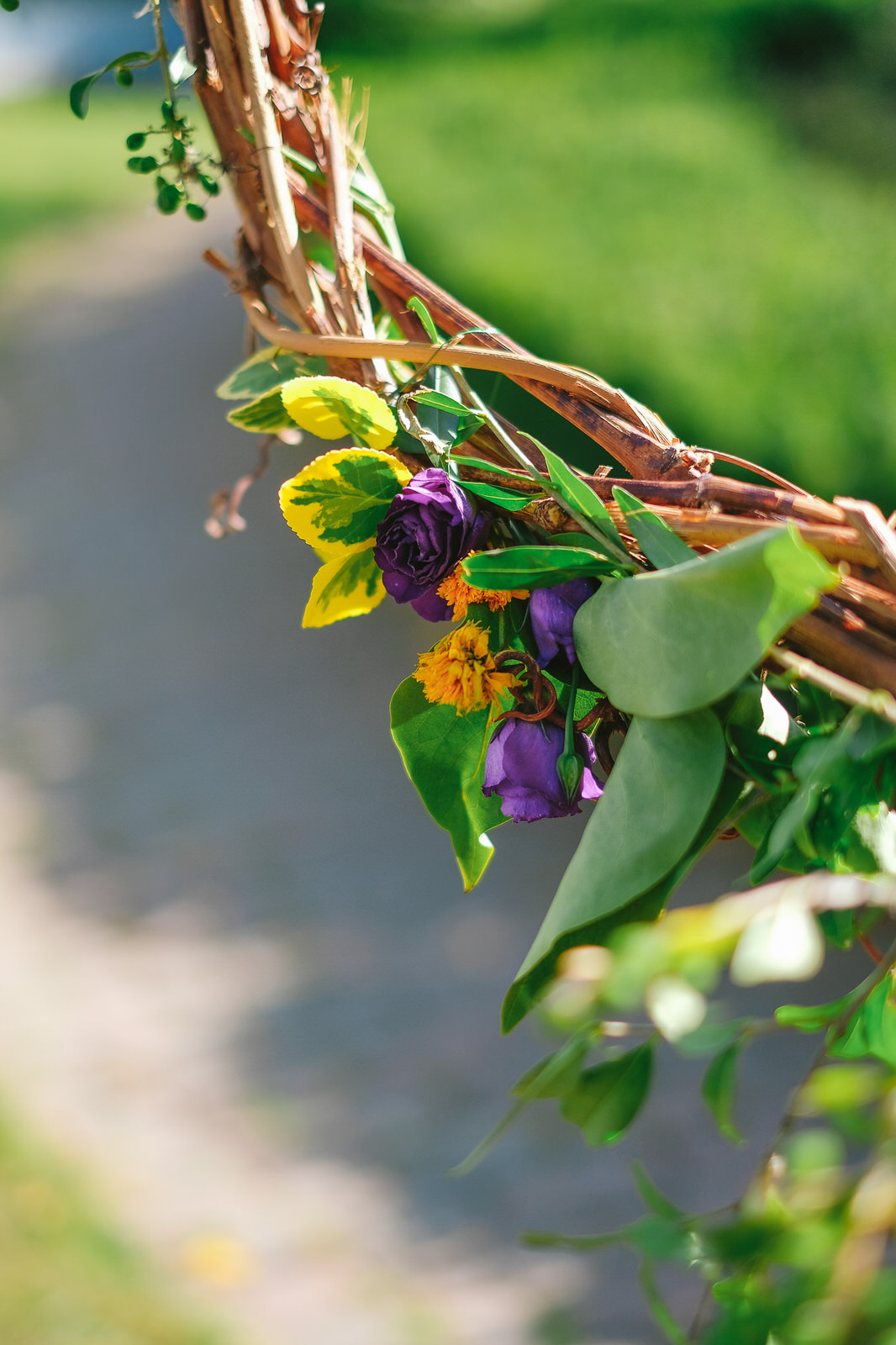A sea of flowers reaching for the sun at Barefoot Blooms. Located in Summerville, Nova Scotia.
T H E S E E D
An ode to the flower. The blossom. The bloom.
As an ethnobotanist I’ve always been fascinated with the choice of flowers for each bridal bouquet or boutonnière. Why was an arrangement pieced together? Was it purely an aesthetic choice, or do the blooms carry meaning? Perhaps a combination of the two?
For years I’d grown accustomed to symmetrical arrangements, pieced together with recognizable blooms and unbound by season or location as they are often readily available. Then came the asymmetrical arrangements full of colour, full of vibrance, full of character.
Never the same, always changing. Always unique. Always captivating.
Those who carried these arrangements did so with pride. I’d never seen such strong emotional investment in bouquets or boutonnières - the connectedness between owner and florals was impossible to ignore. They were seen as less of an accessory and I truly believe that the reasoning behind their value can be attributed to the process of their cultivation. The process of their creation.
T H E S H O O T
Visit Barefoot Blooms and you won’t be greeted by display shelves or fridges. There are no catalogues or inspirational materials to leaf through. Instead you’ll be greeted by row upon row of flowers, still growing in the same soil that their seeds germinated in. Bees, butterflies and hummingbirds flit from one row to the next as the breeze carries the scent of the flowers they visit. Much of the garden follows the principals of permaculture - the philosophy of working with, rather than against nature. Visit the following month and the insects and birds will still be there, but the blooms they visit will be different. Different scents. Different colours.
Never the same, always changing. Always unique. Always captivating.
T H E B U D
I was invited by Denise at Barefoot Blooms to document a garden visit / mock-up session with two of her clients, Sara & Alek. This is the experiential part of her business that I adore and I was excited to watch the process unfold. Sara & Alek were presented with a dining table full of freshly cut blooms - a sampling of what was currently flowering outside. The exact number on display escapes me, but there were dozens of varieties, ranging from hydrangea (cut from a century-old tree!) to blue sea holly and sweet peas. From the dining table the visit transitioned to the gardens and greenhouses spread across the property. Interacting with cut flowers is one thing, but being able to explore them uncut and in situ is a wonderful experience. One can witness their true stature - from the way petals unfurl towards the sun, or how leaves extend their reach to either side. How do cone flowers compare to hyacinth? Astilbe to salvia? Amaranth to ornamental grasses? You’re able to explore without disturbing, to place blooms in context, to learn how they are cultivated and to discover that many of these plants have rich histories and a myriad of uses that range from food to medicine and often art. The Amaranth? Cultivated for consumption. The cone flower? Used to boost the immune system or reduce inflammation. The hyacinth? Crushed and utilized as an ink.
And as you’re exploring and taking note of what the landscape has to offer you’re unwittingly laying the foundation that your arrangement will be built upon.
T H E B L O O M
After the garden tour, Sara & Alek were invited back to the dining table where they started and asked to arrange the flowers in order of their perceived attractiveness - one end of the table will contain blooms they feel an attachment to while the other will not. It’s a fascinating exercise and I firmly believe that the time spent outside influences decisions made.
A hand darts towards a vase, then back again in hesitation. A moments pause, followed by a second look from a different angle. The hand moves between vases again - this time hydrangea is selected and moved to one end of the table, followed by pink and blue lace flowers. Blue sea holly follows suit, as does pink gomphrena, lisianthus and white ball dahlias. Wild spirea, eucalyptus and sweet peas are next - the latter whose tendrils help encircle the final bouquet. And last, but certainly not least - yellow birdsfoot trefoil - a flower that Sara’s father always referred to as ‘Sara-flowers.’ In an instant I’m taken back to my original questions and provided with the answers I sought. There are meaning and aesthetic in all of these selections and the emotions conveyed by Sara & Alec as Denise pieces together the selection is perfect. Wonder. Appreciation. Joy and contentment.
T H E B O U Q U E T
A trial bouquet and boutonnière are passed from one set of hands to the next. Held, inspected and loved. The visit may have come to an end but everyone has the wedding to look forward to, and with it the final collection of arrangements.
I should note the irony of the following observation as I myself am a wedding vendor, but I’ve found that the process of planning a wedding has become overly commodified and there can be a tremendous amount of pressure placed on those who craft their own celebrations. Packages, inspiration boards, shows, opinion pieces and targeted advertising. My fear is that couples can easily lose sight of what makes them happy, what it means to celebrate with friends and family. An afternoon at Barefoot Blooms takes a stab at that by slowing things down and allowing for exploration. Allowing for creativity. Allowing for a change of pace. Every individual I’ve spoken to has been quick to share their experiences at Barefoot Blooms and how they hadn’t anticipated the impact it would have on their wedding. One should have fun with organizing such an event - they should look forward to the next step of the process. A simple stroll through the flowers can work wonders.
Feel free to visit Barefoot Blooms * here *
Although not tied to Sara & Alek’s visit, this bouquet is another example of what Denise is able to craft. These blooms were picked mid-September. The gallery below offers a larger selection of photos captured at the same wedding.

